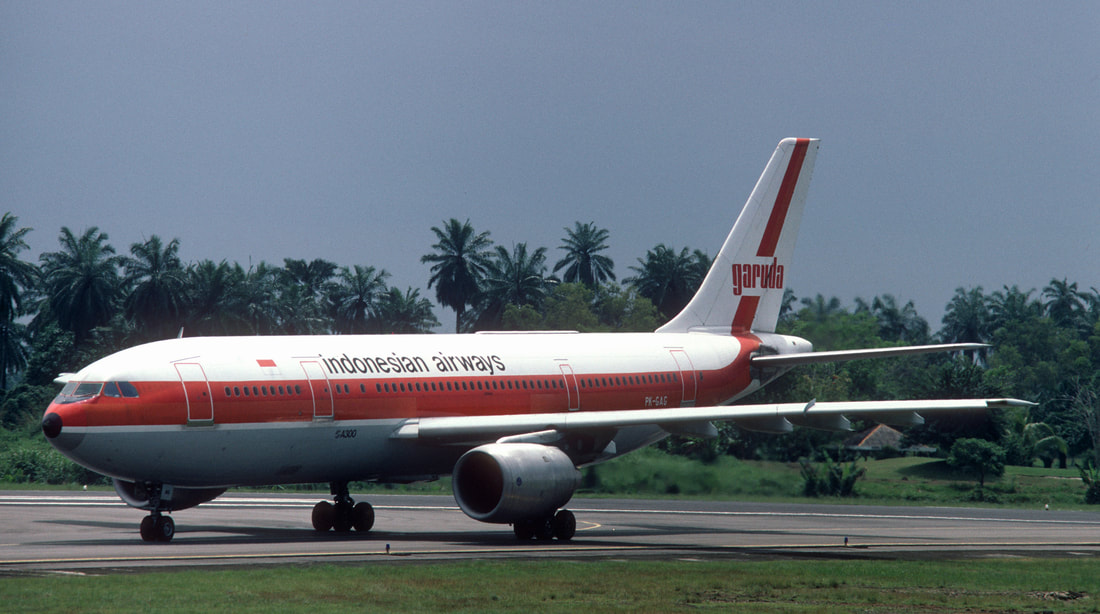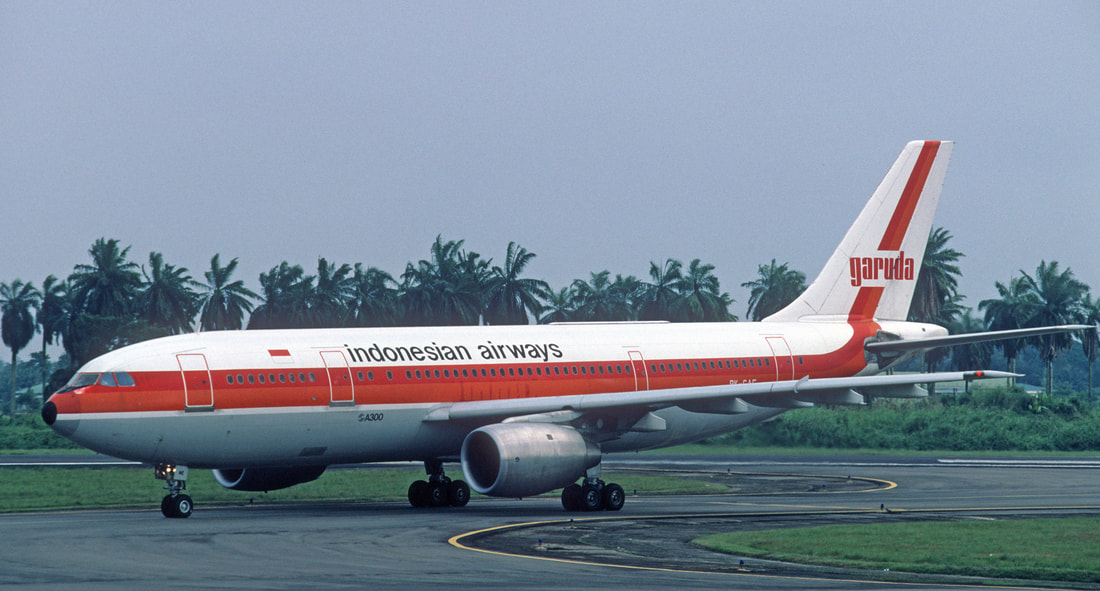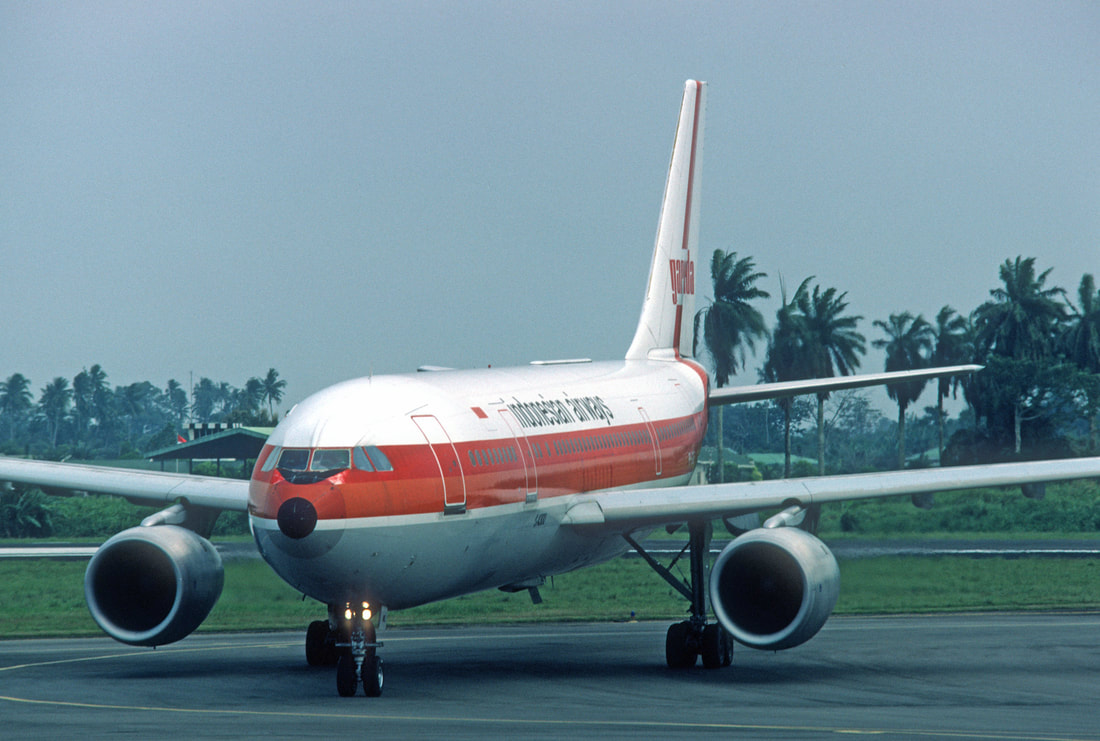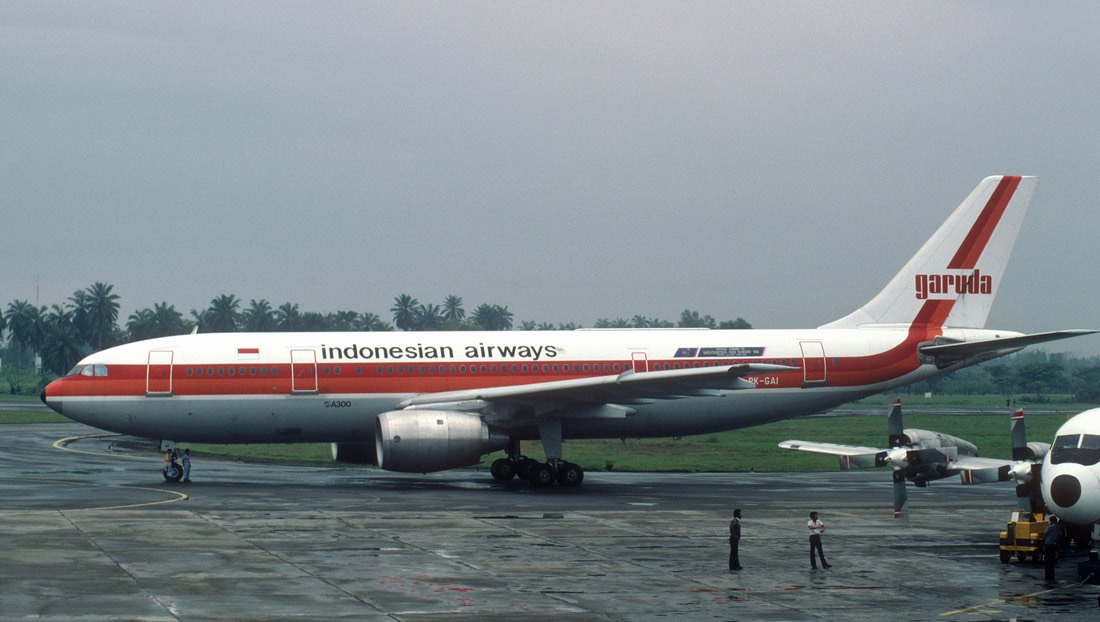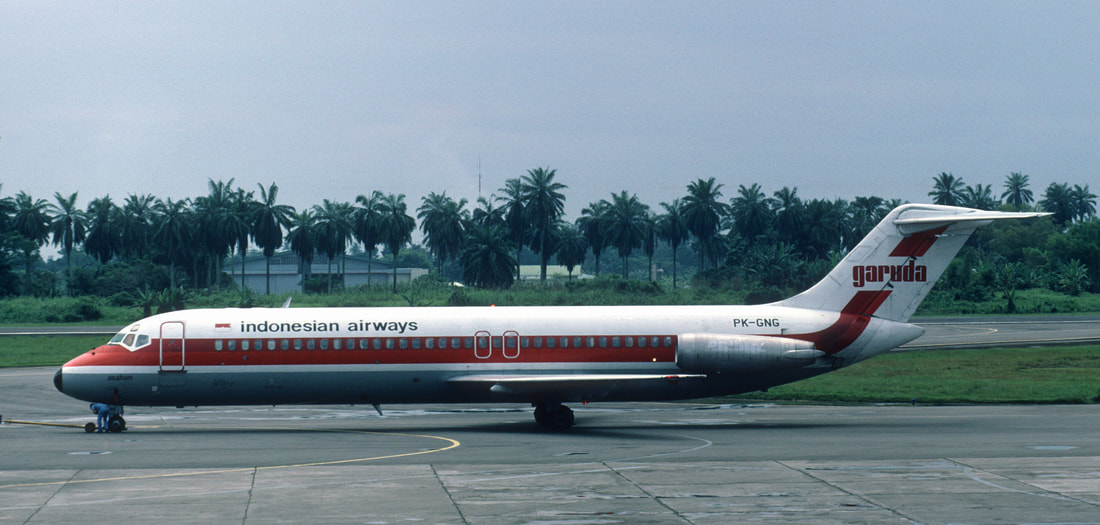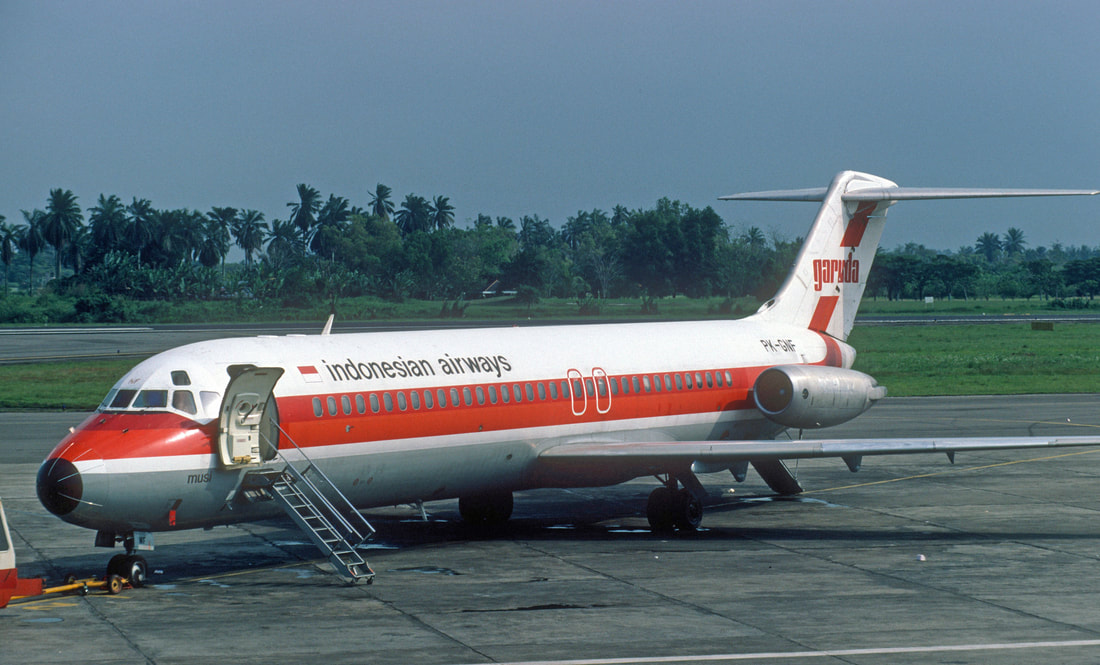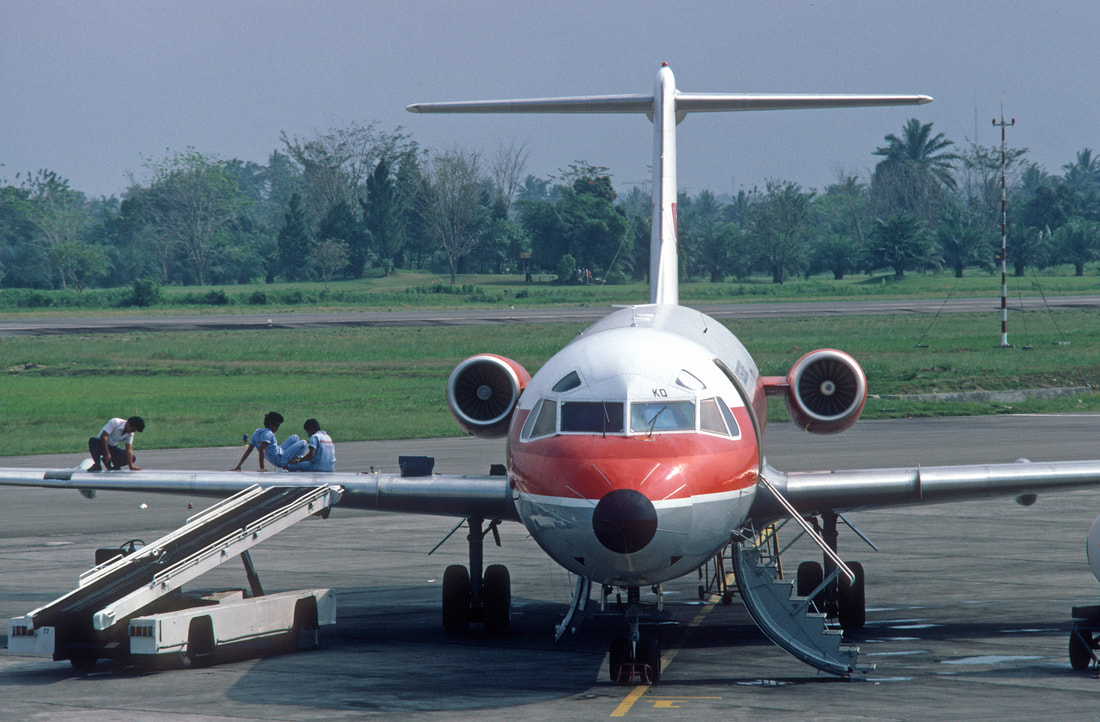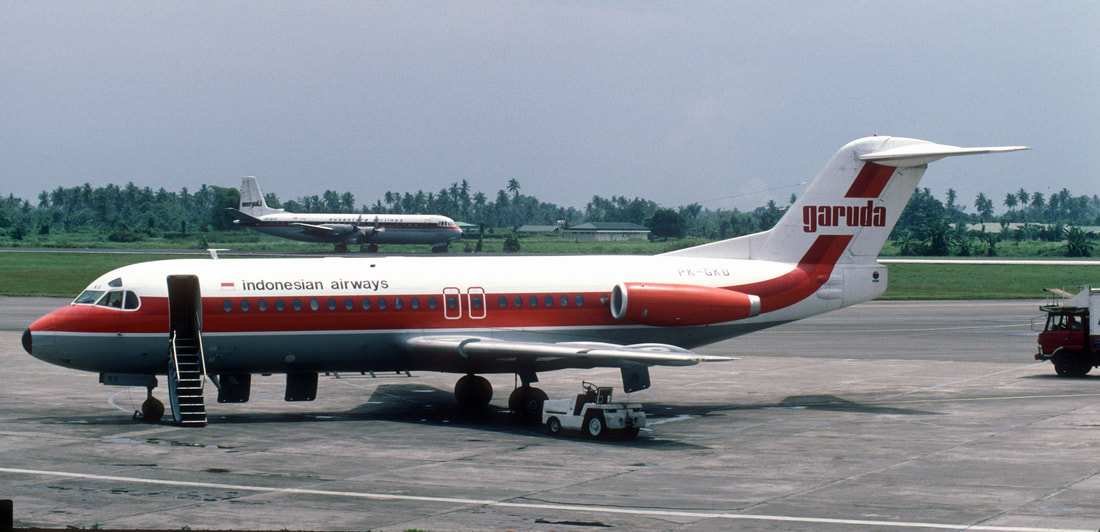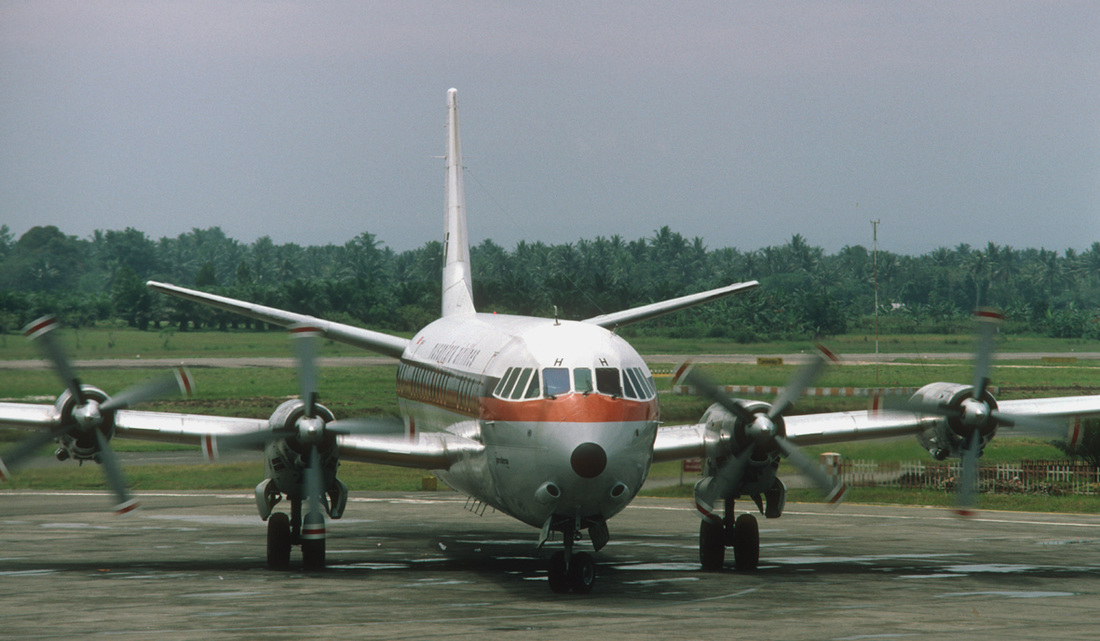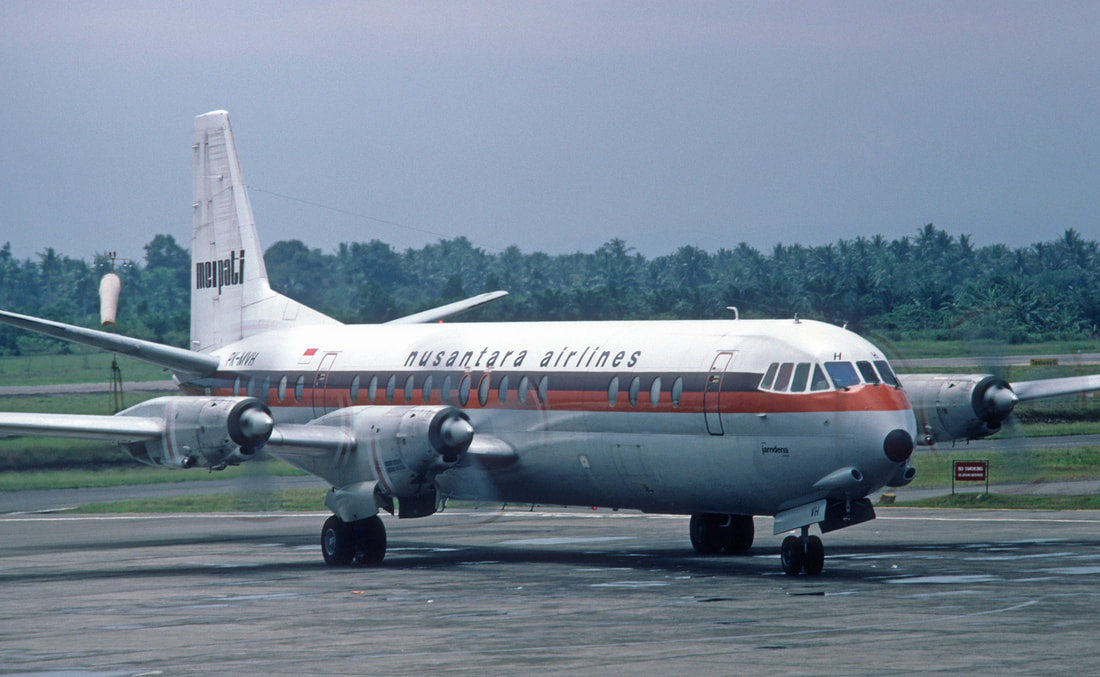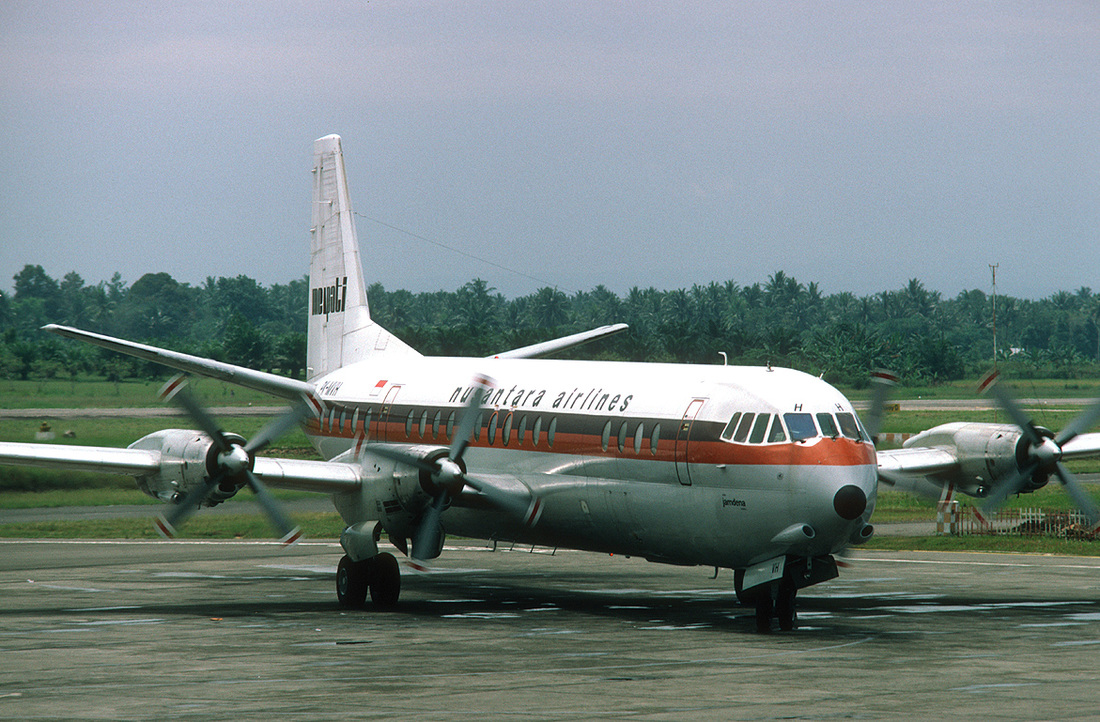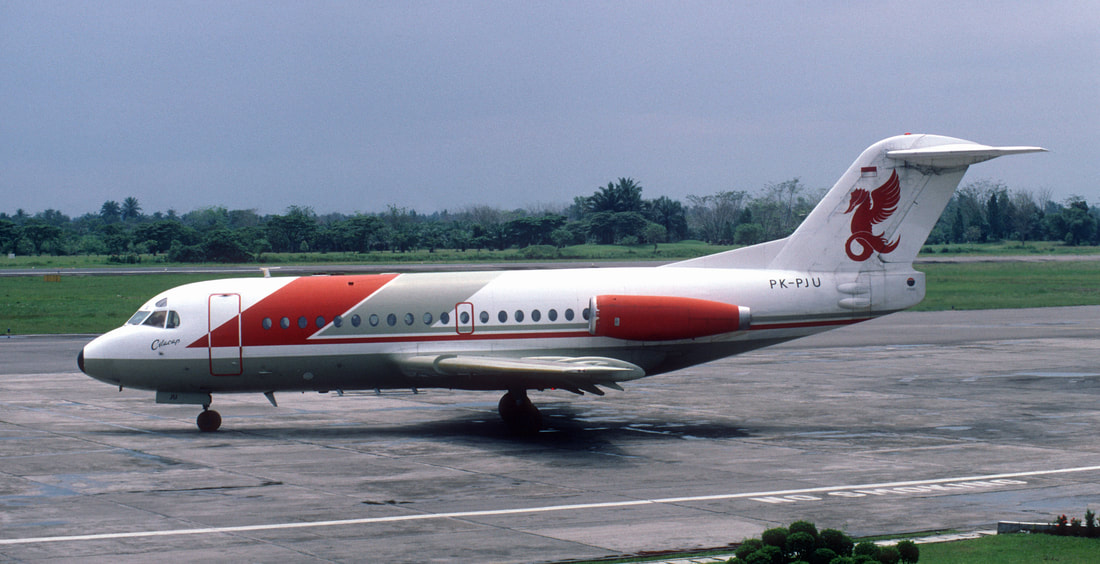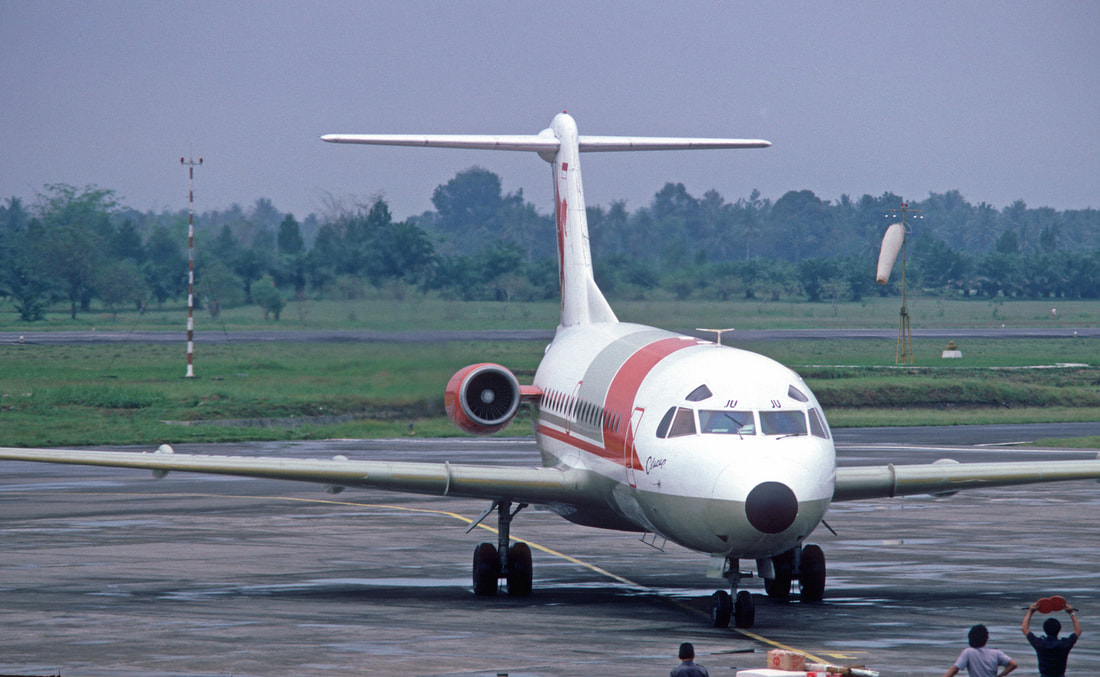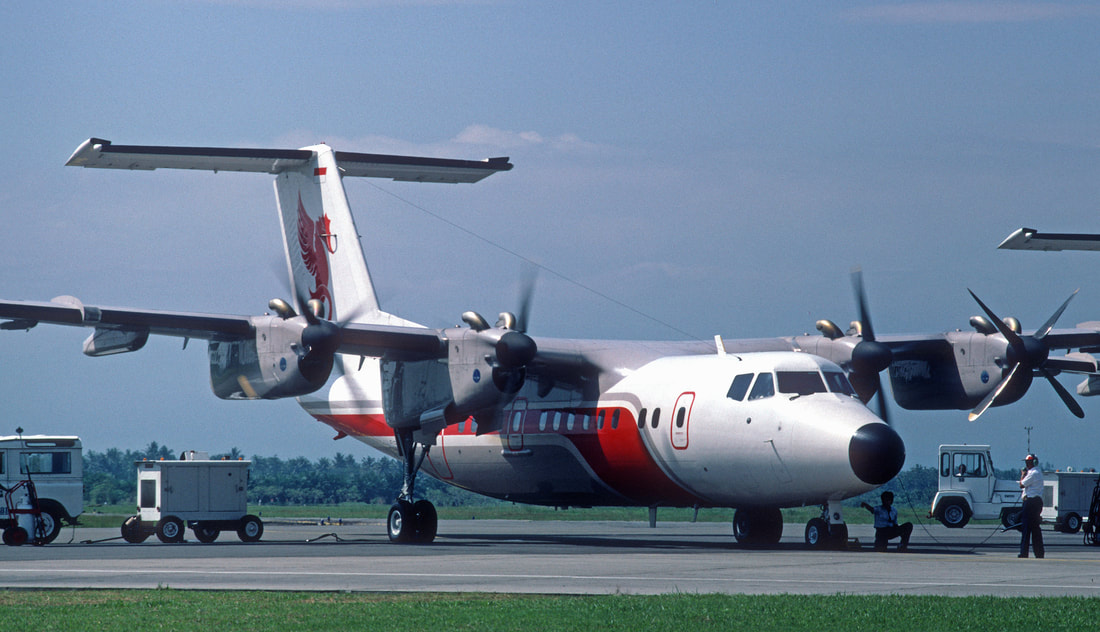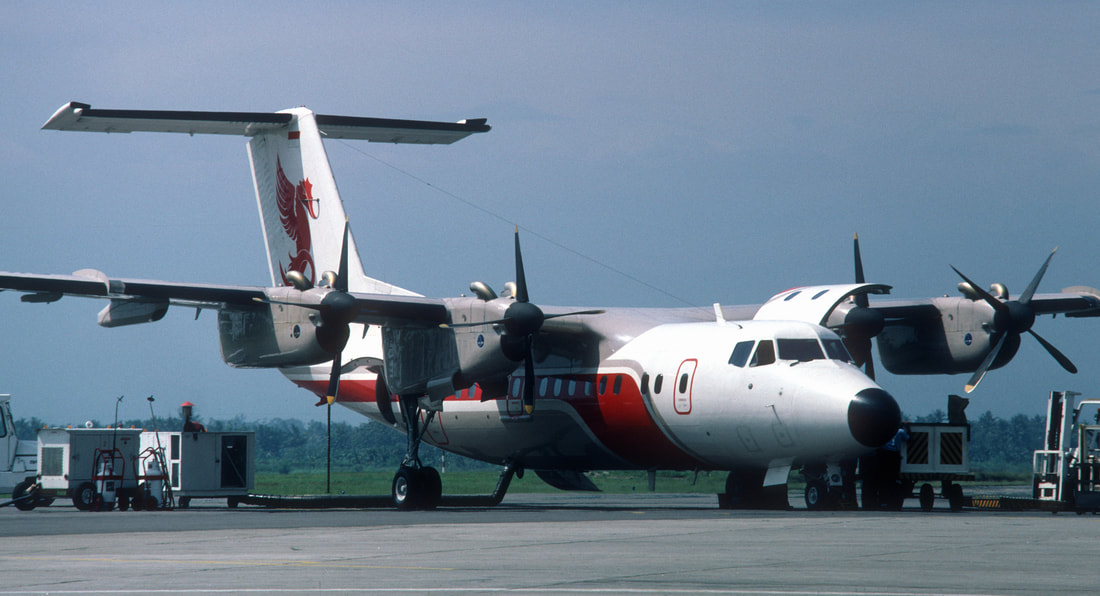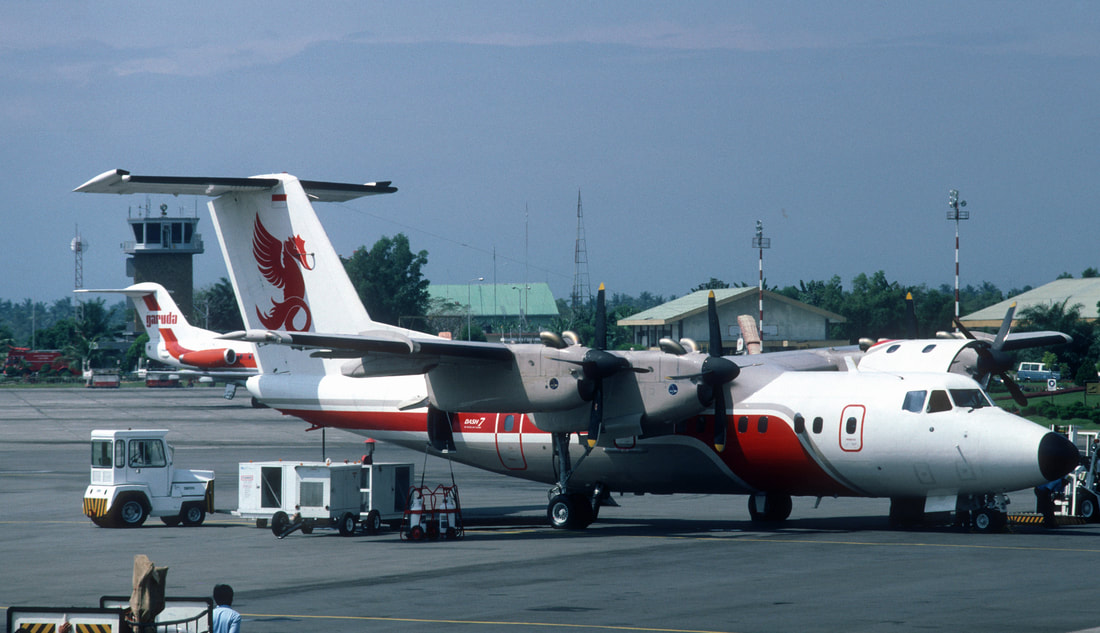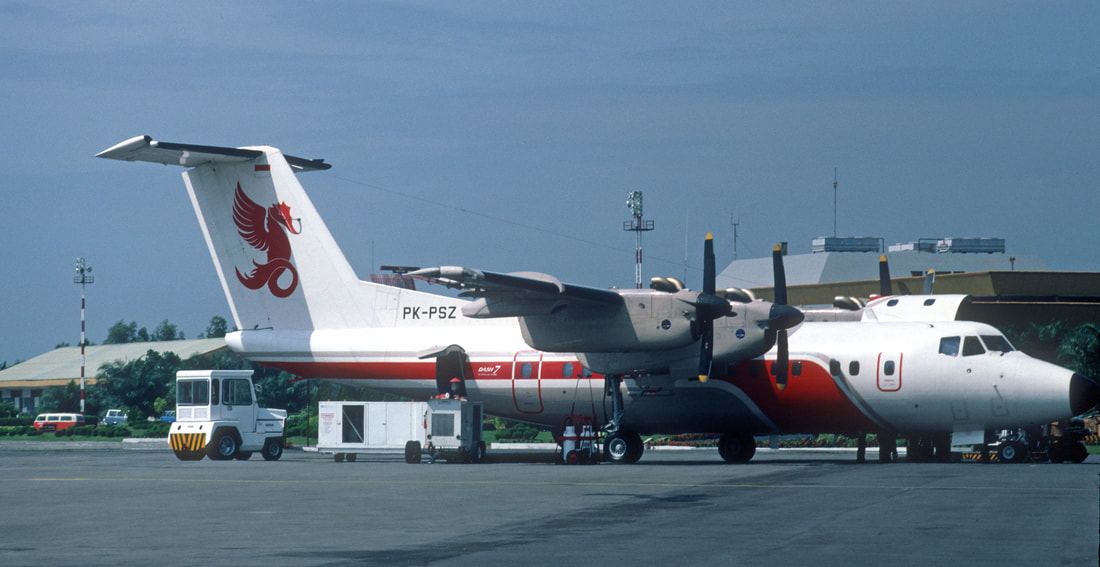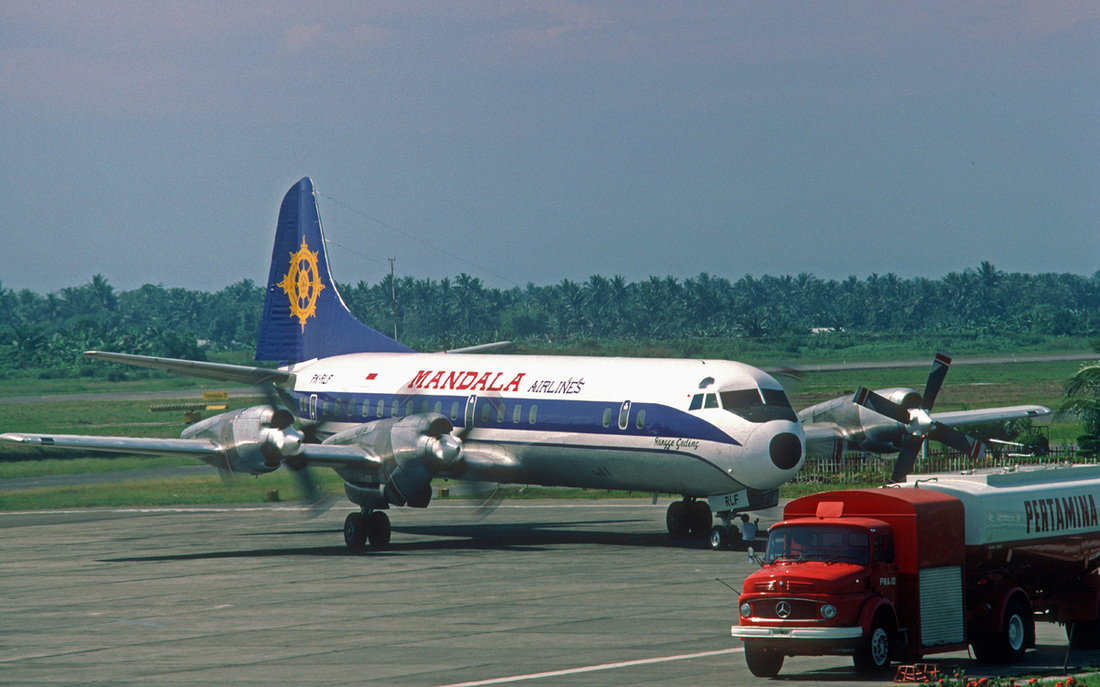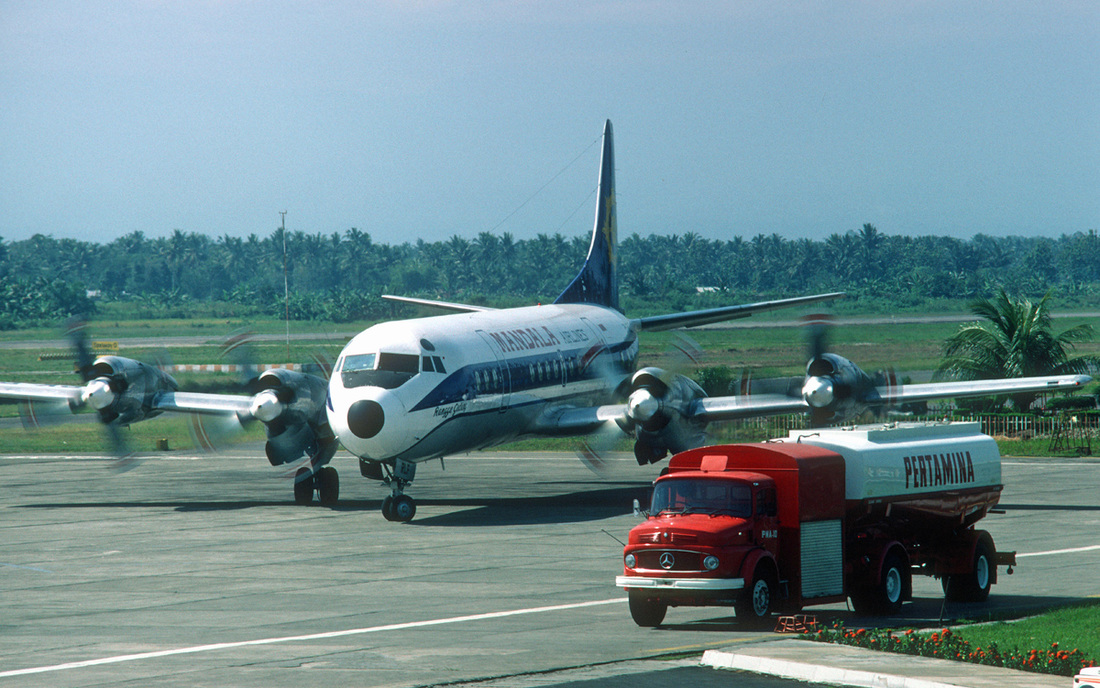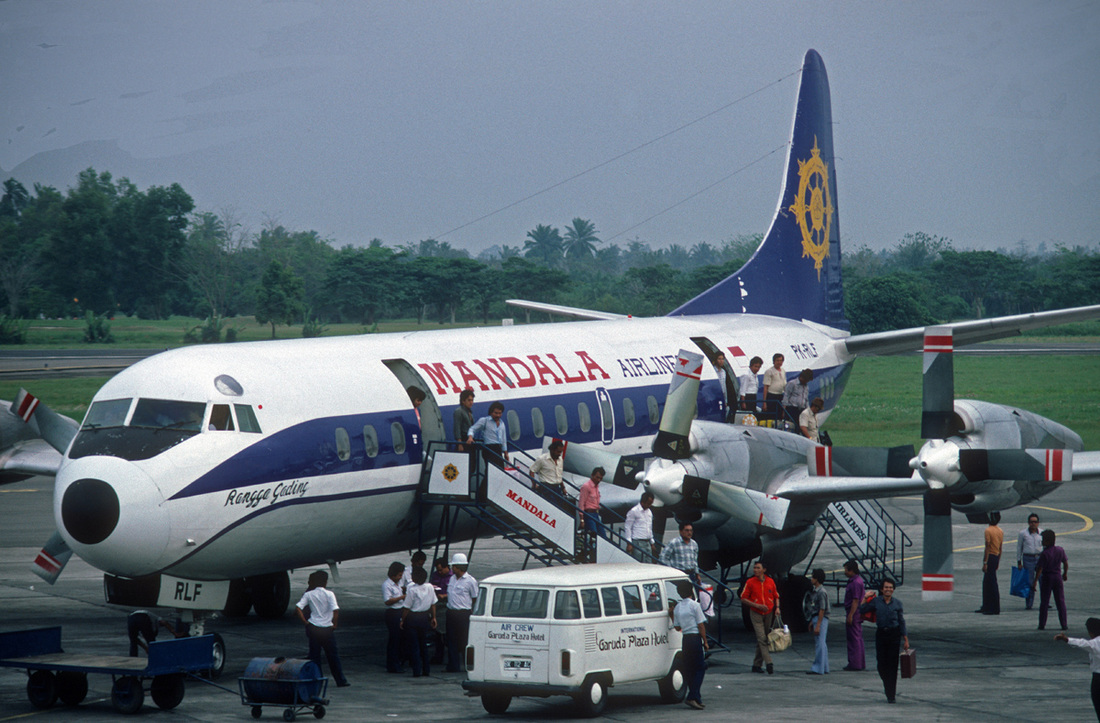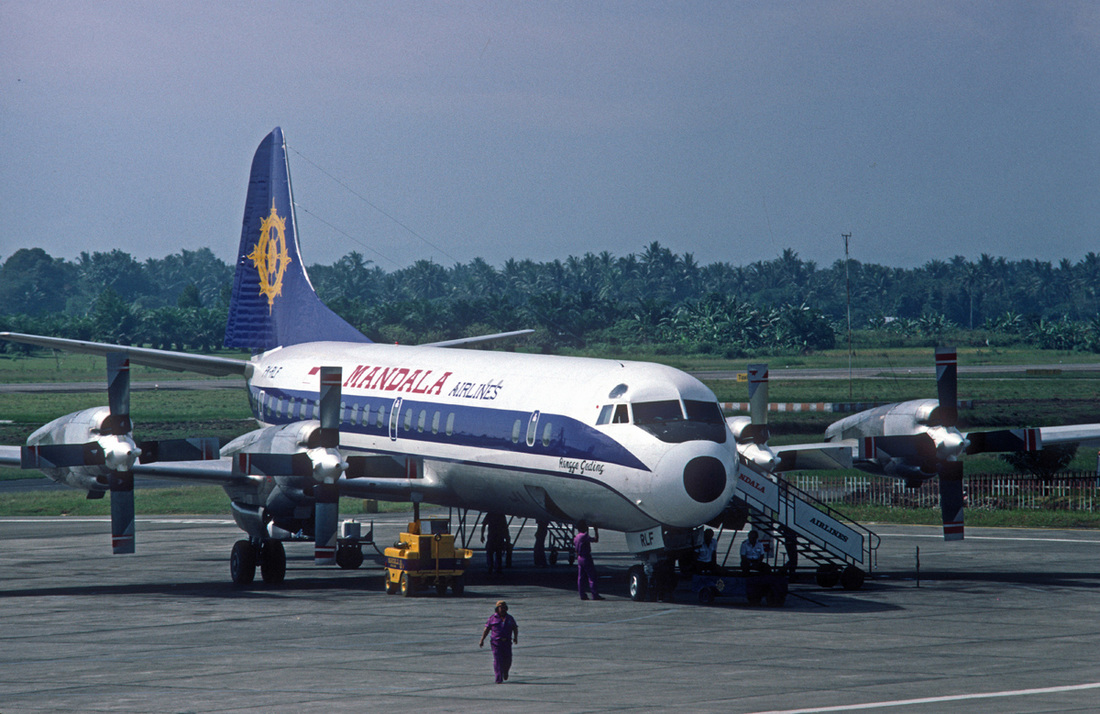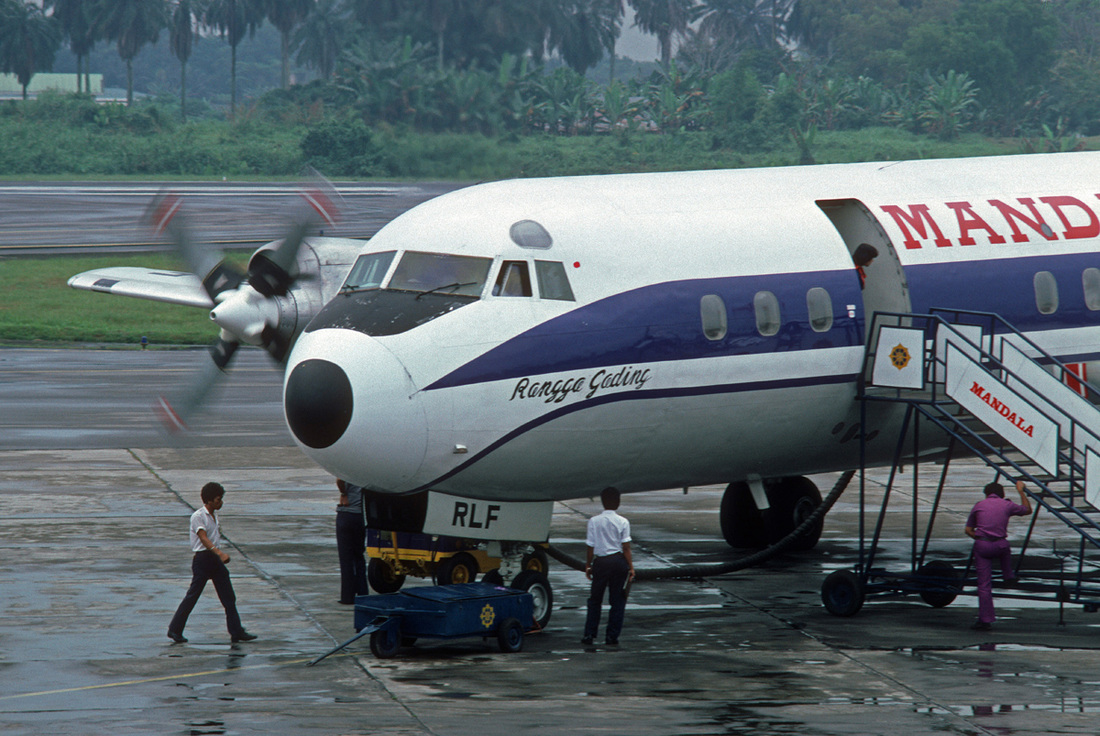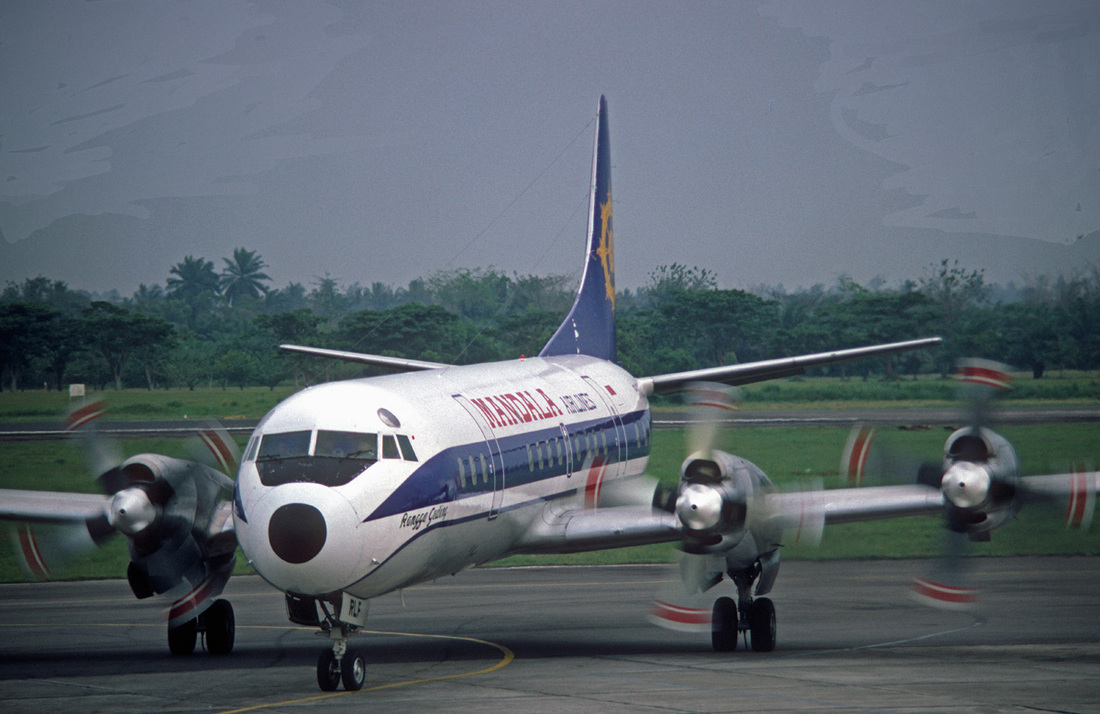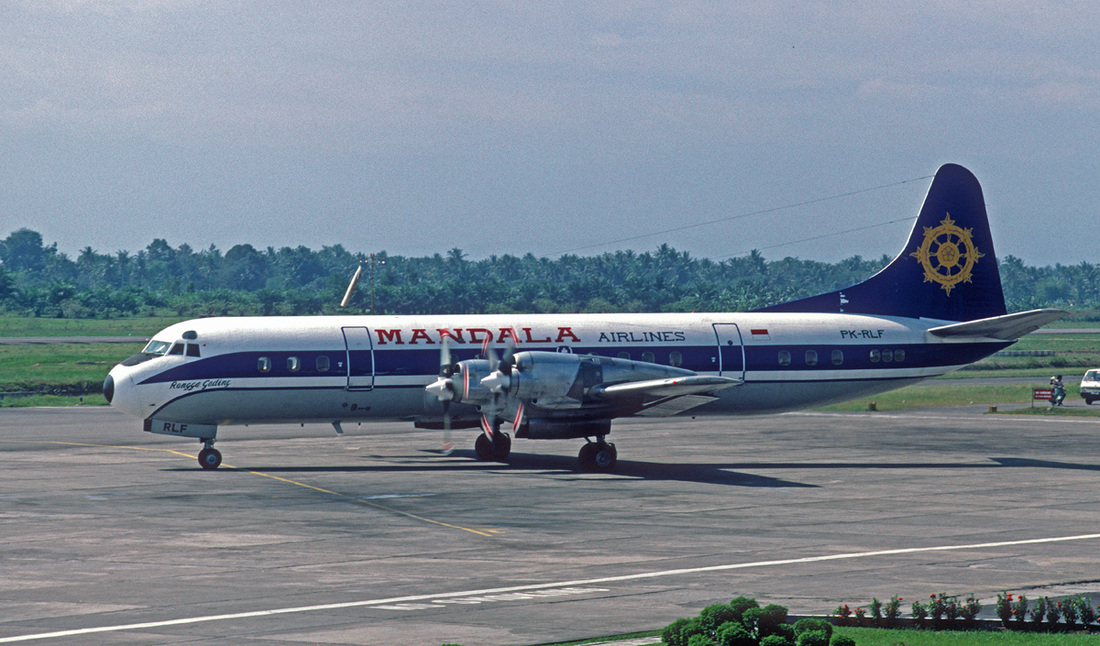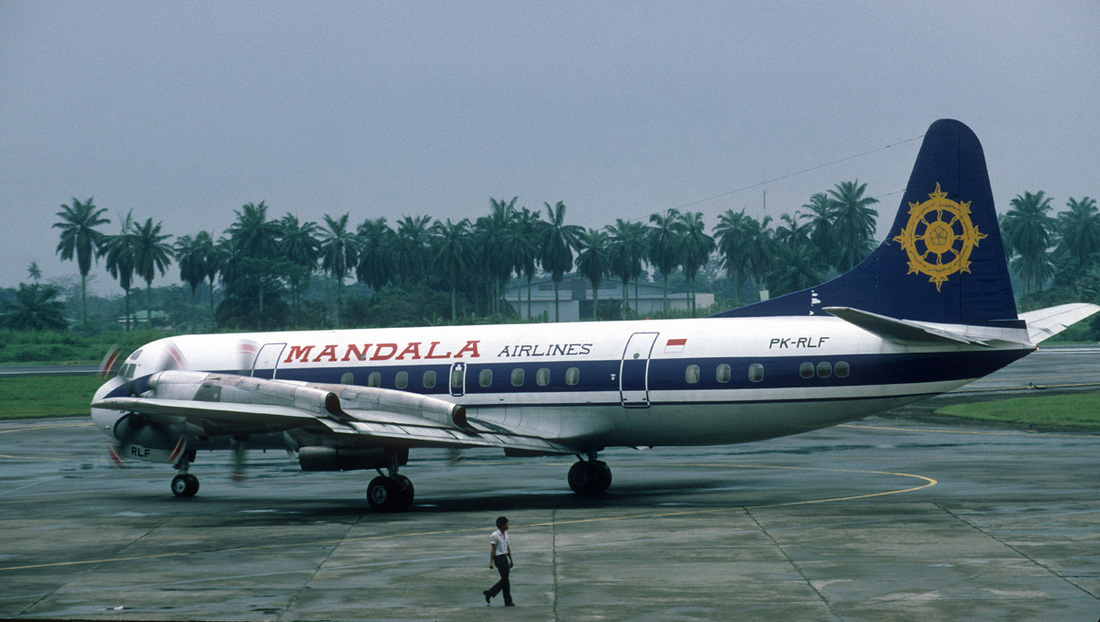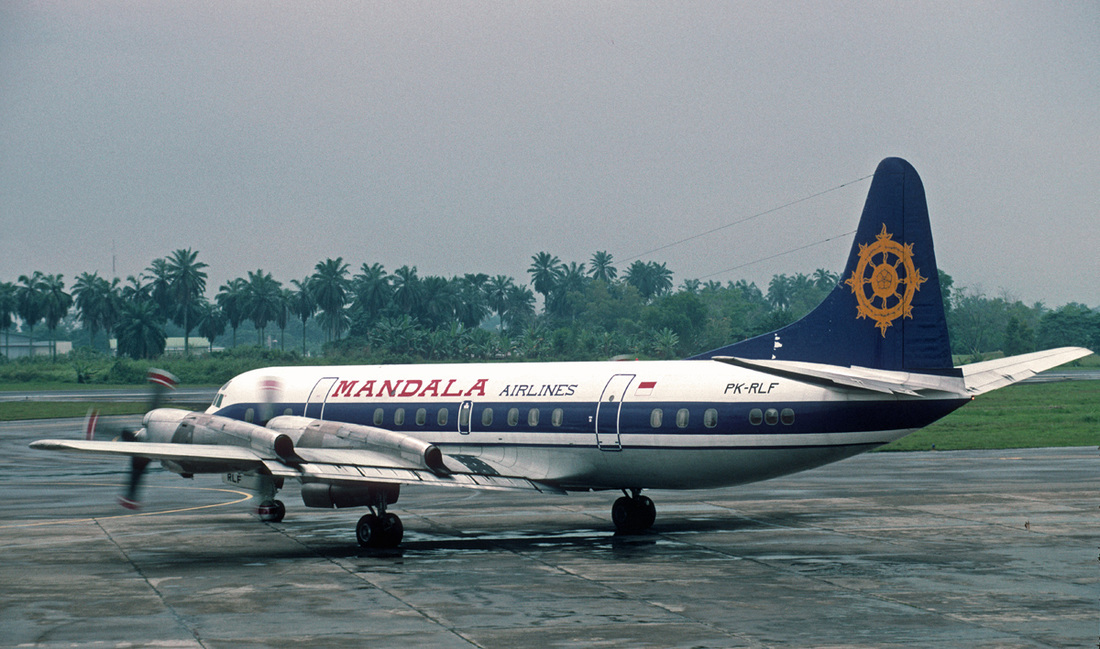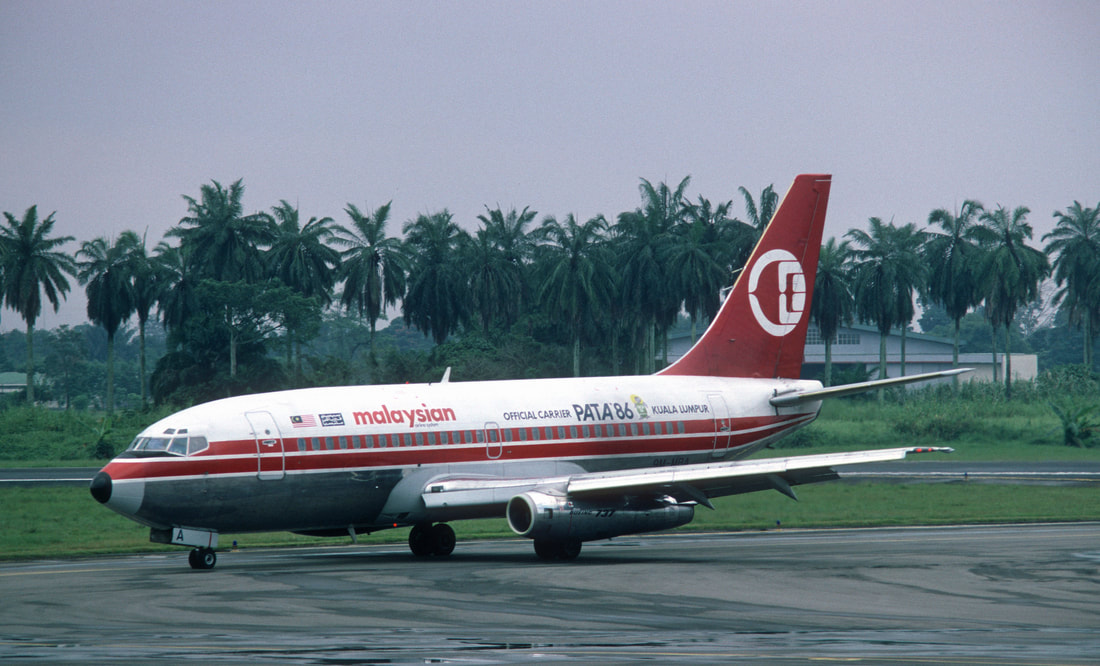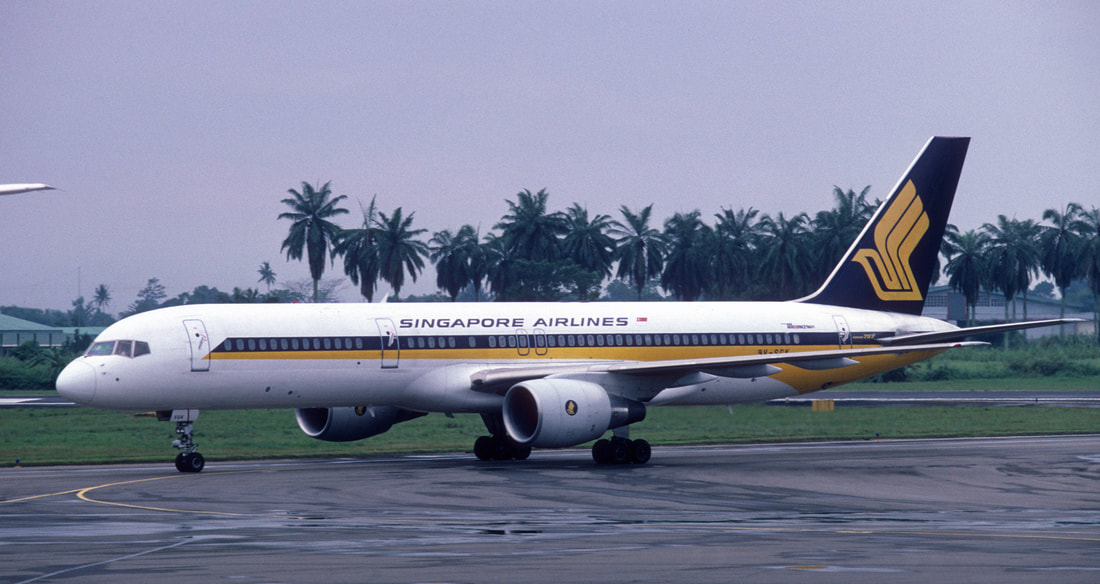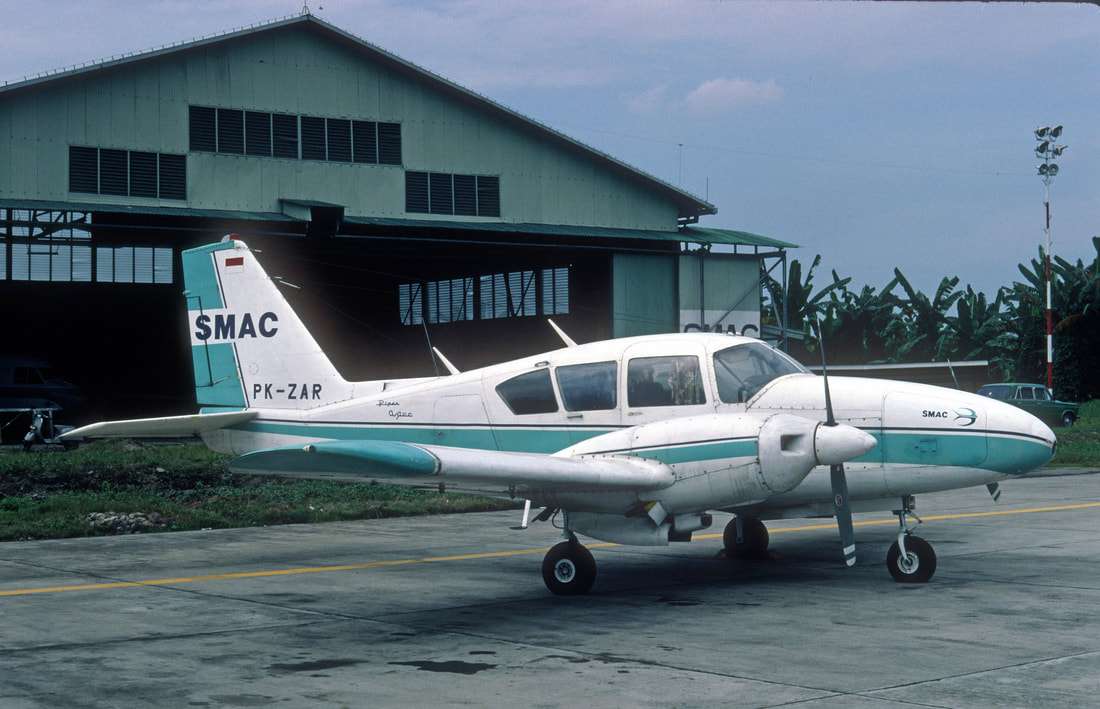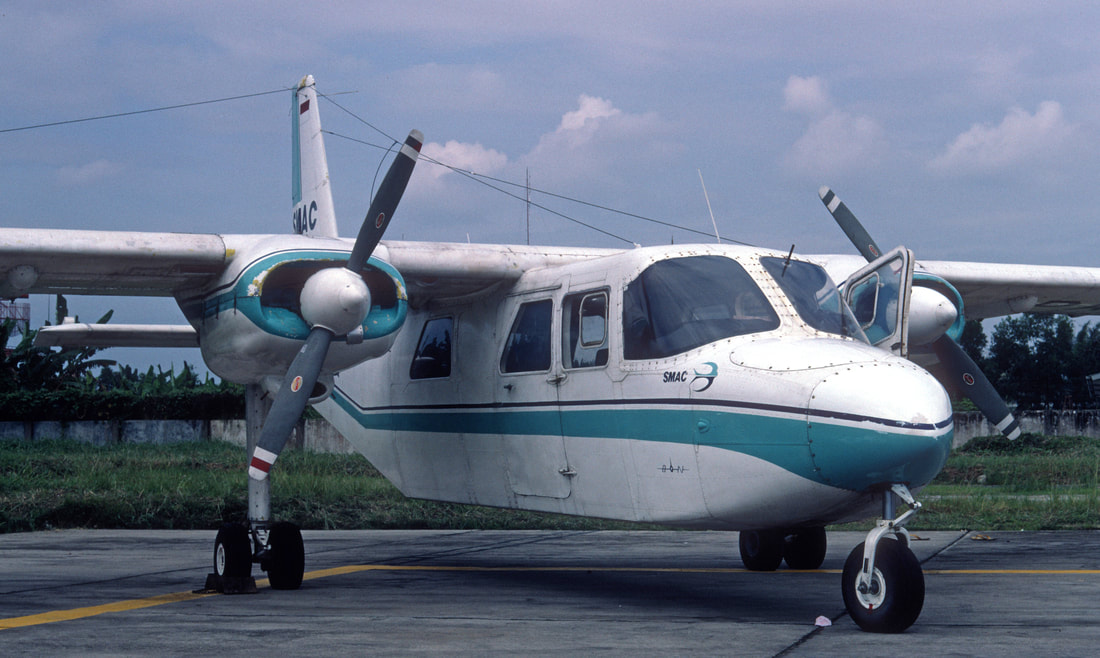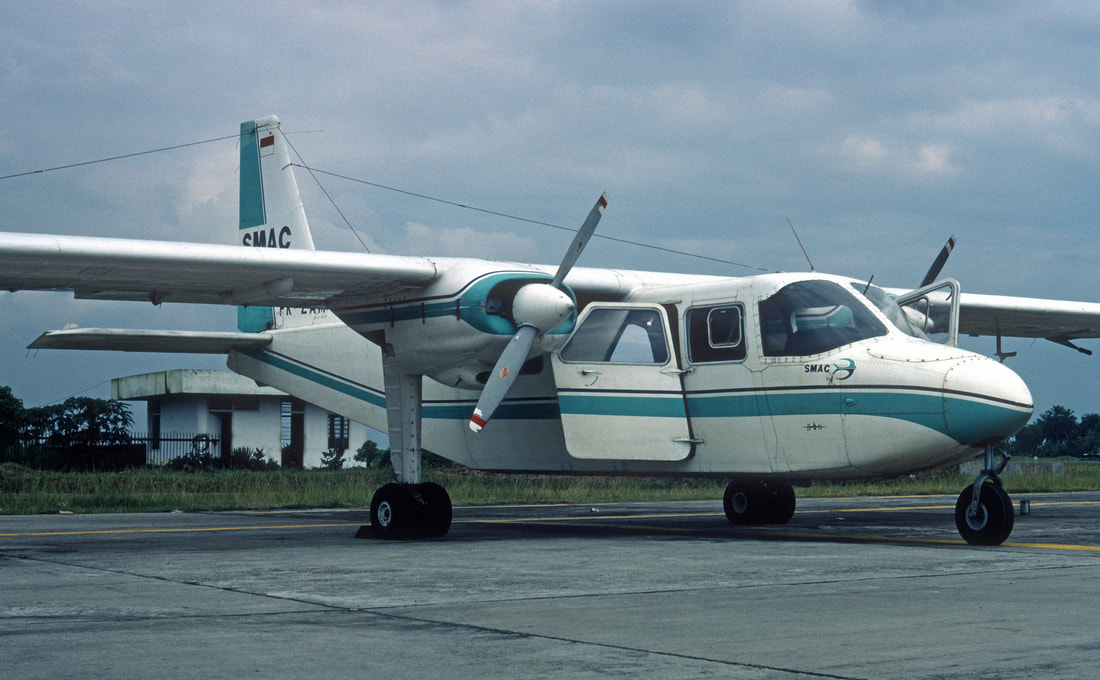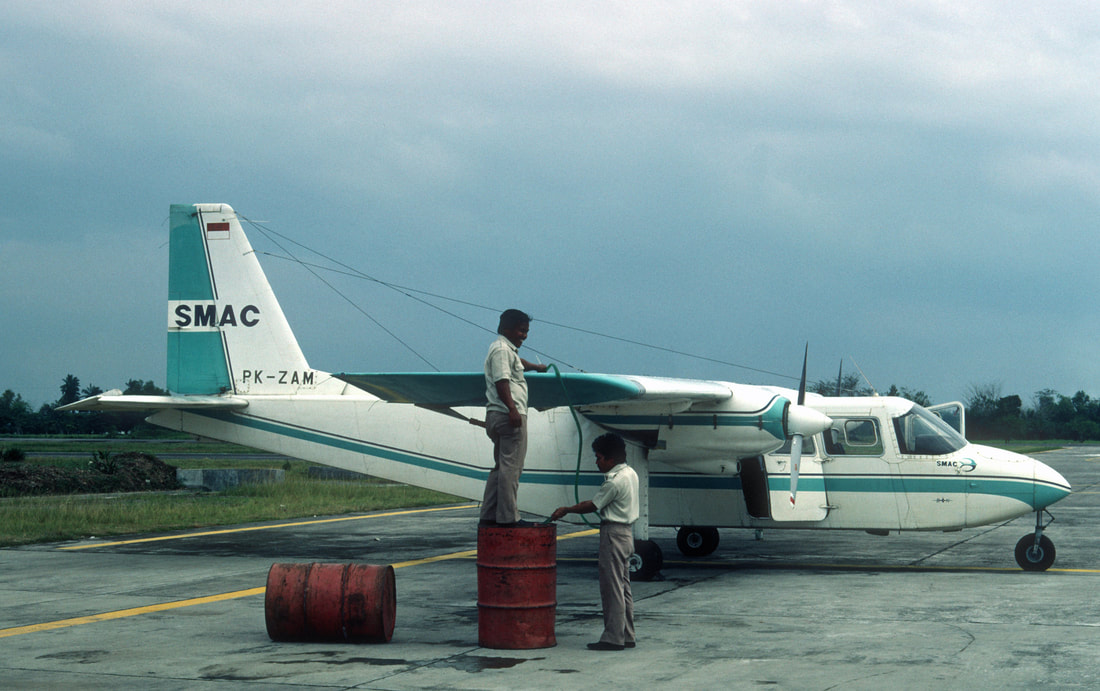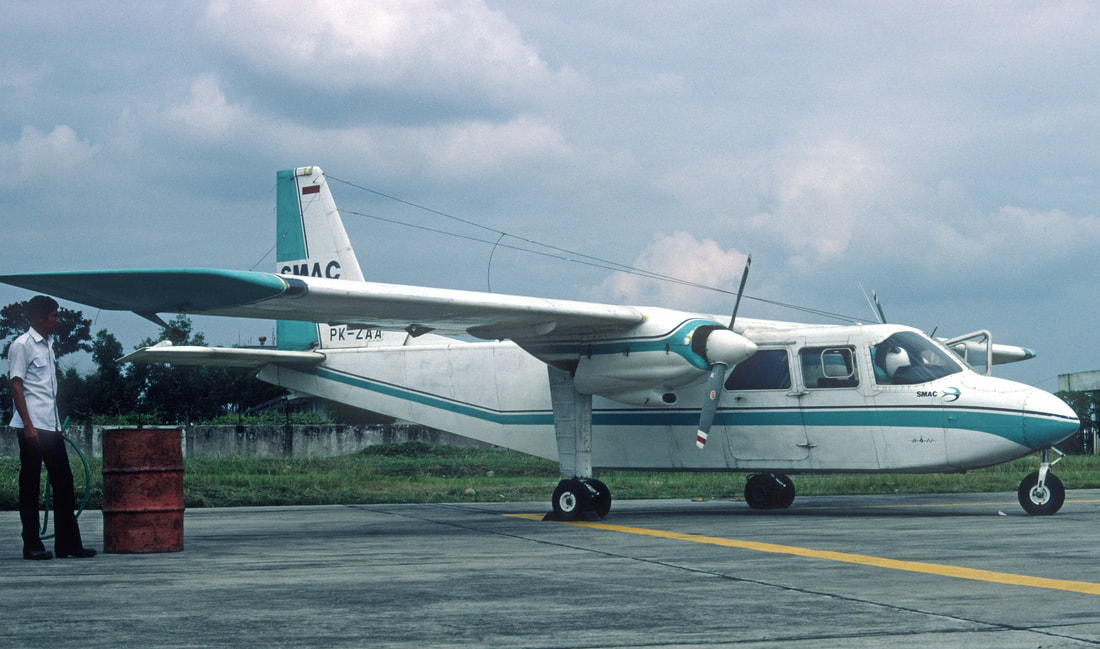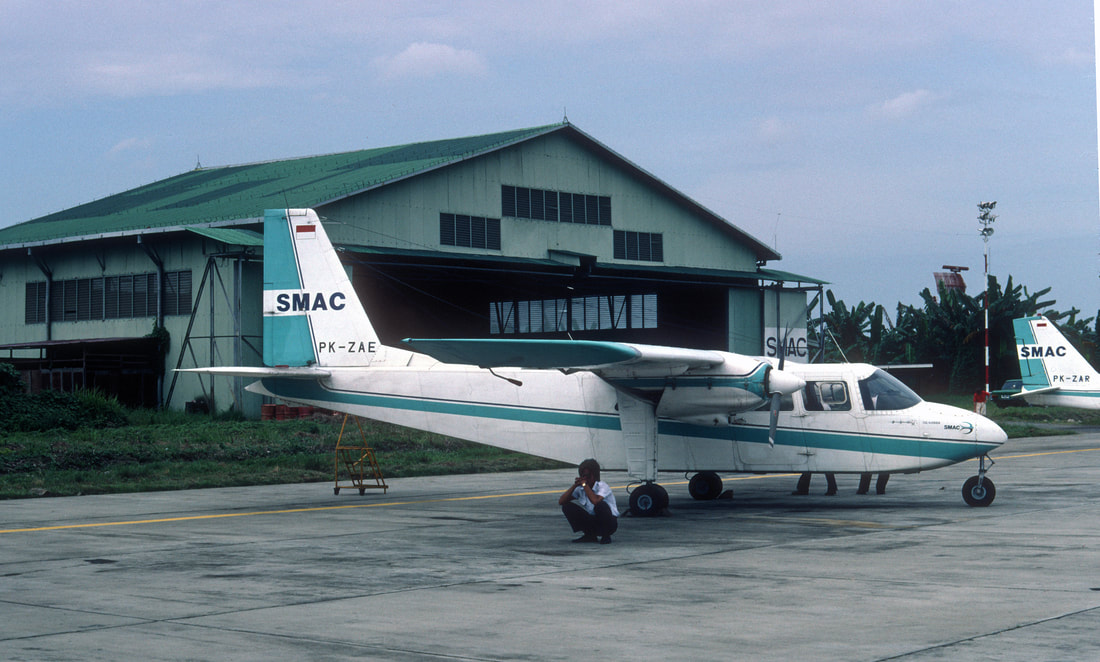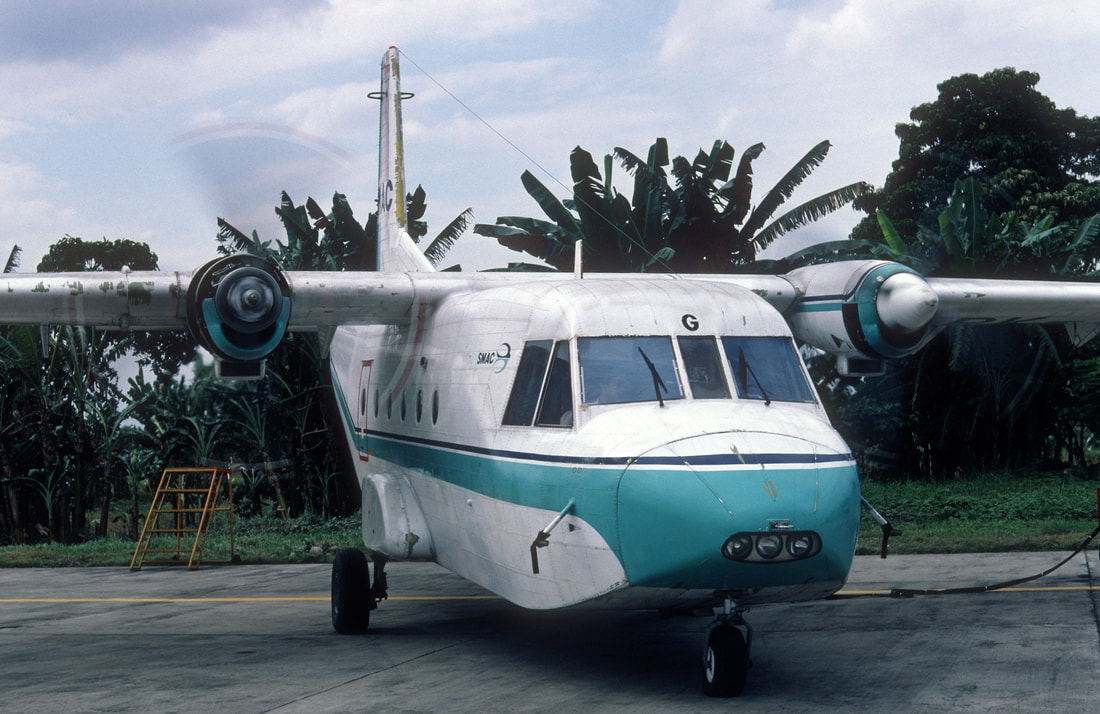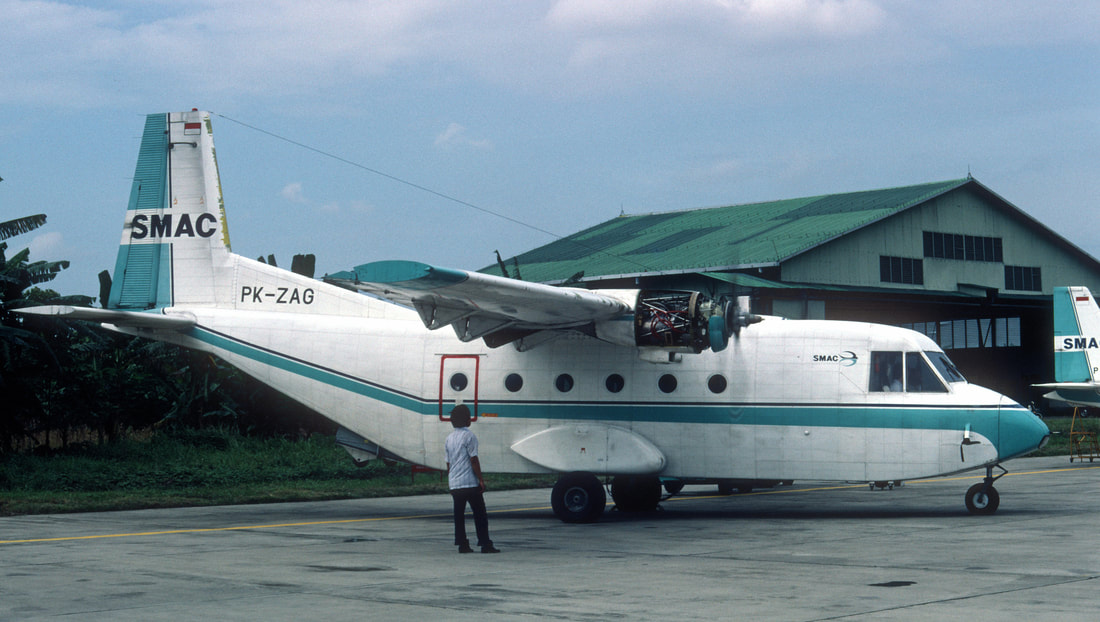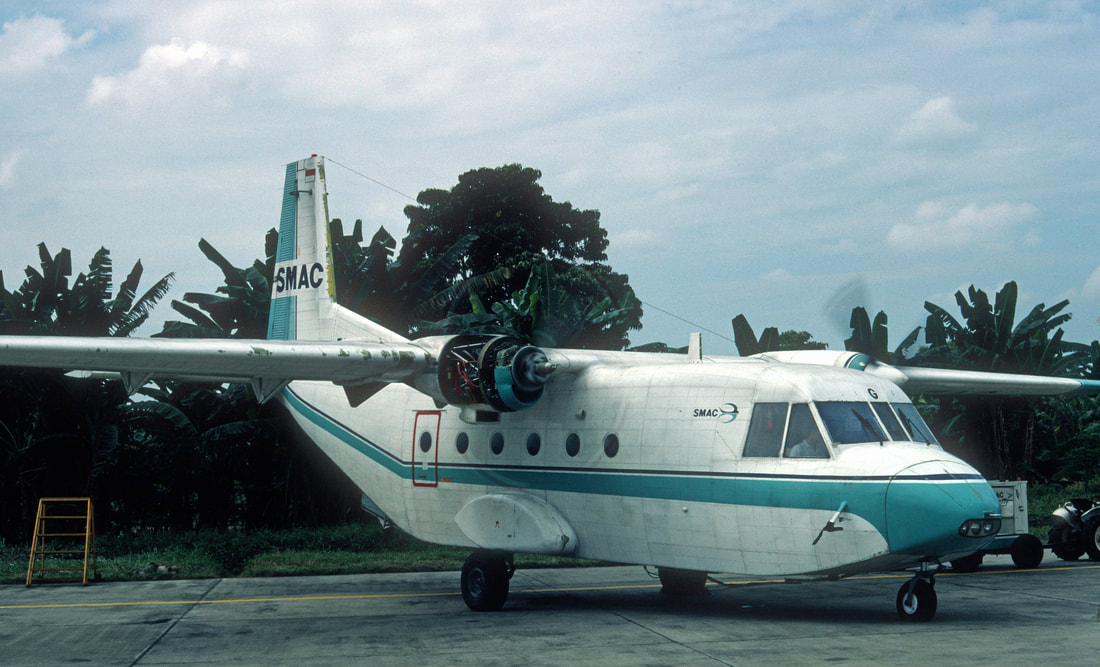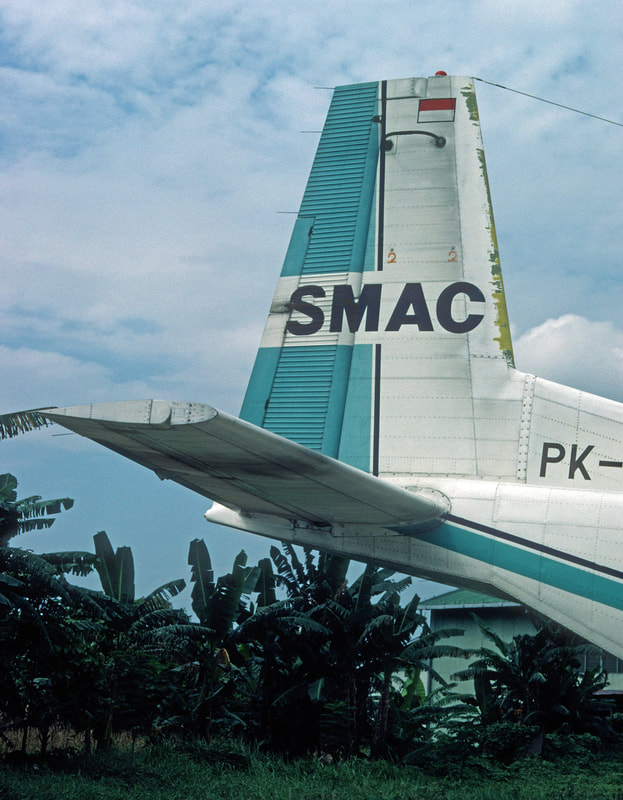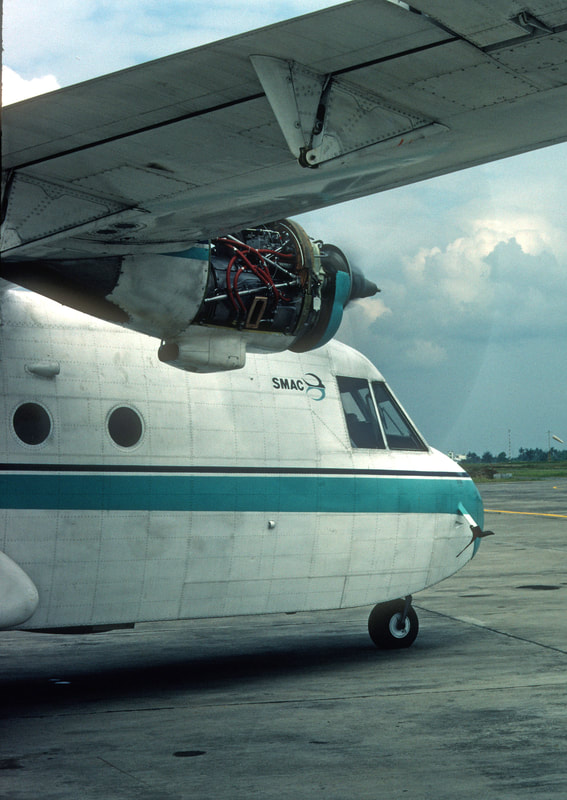Remember Medan Polonia Airport
Travelling back in time
By Jan Koppen
Soewondo Air Force Base is the former Polonia International Airport which was the principal airport serving Medan, North Sumatra, Indonesia, about 2 km from the downtown and used to serve flights to several Indonesian and Malaysian cities, along with a flight to Singapore and Thailand. Previous international flights had been opened to Hong Kong, Taipei, Amsterdam, Phuket, Chennai, Johor Bahru, Malacca and Ipoh.
At the end of its service as civil airport, Polonia was the fourth largest airport in Indonesia after Soekarno–Hatta, Juanda, and Ngurah Rai, in terms of passenger numbers. All flights and services from this airport shifted to Kuala Namu International Airport on 25 July 2013. Now as Soewondo Air Force Base, the airport belongs to the Indonesian Air Force. It will host the Western Surveillance Wing including eight CN-235 tactical surveillance airplanes.
At the end of its service as civil airport, Polonia was the fourth largest airport in Indonesia after Soekarno–Hatta, Juanda, and Ngurah Rai, in terms of passenger numbers. All flights and services from this airport shifted to Kuala Namu International Airport on 25 July 2013. Now as Soewondo Air Force Base, the airport belongs to the Indonesian Air Force. It will host the Western Surveillance Wing including eight CN-235 tactical surveillance airplanes.
"Garuda Airbus A300B4-200 PK-GAI is seen here arriving from Jakarta with another load of passengers".
On September 1997 Garuda’s Airbus 300B4-200 PK-GAI operating flight GA152 (Jakarta-Medan) was cleared for an ILS approach to Medan runway 05 and was flying on a 316deg heading on Airway 585/W12. Having descended to 3000 feet the crew were instructed to turn left heading 240deg for vectoring to intercept the runway 05 ILS. At 13:28 the flight was instructed to continue on a 215deg heading and descend to 2000 feet. At 13:30 ATC directed the flight to turn right heading 046 and report when establishing the localizer. Confusion on the part of the air traffic controller followed over whether GA152 was turning left or right. Just 10 seconds after confirming the right turn, the Airbus crashed in a wooded area, broke up and burst into flames. The wreckage covered a 150x75m area near the village of Pancur Batu, which is located at 900-1000m amsl.
The region was affected by smog from forest fires; visibility was reported to be 600-800m.
The region was affected by smog from forest fires; visibility was reported to be 600-800m.
|
Garuda Indonesia is the flag carrier of Indonesia.
Named after the holy bird Garuda of Hinduism and Buddhism, and the national emblem of Indonesia. The earliest predecessor to Garuda Indonesia was KNILM, Royal Dutch Indies Airways, founded in 1928 during the Dutch colonial period; despite the similar name, it was not a subsidiary of the main Dutch carrier KLM. KNILM was dissolved in 1947, and its assets were transferred to a new KLM subsidiary, KLM Interinsulair Bedrijf (KLM Interinsular Service), which was nationalized in December 1949. The name "Garuda" was derived from a Dutch poem written by a renowned Javanese scholar and poet Raden Mas Noto Soeroto; "Ik ben Garuda, Vishnoe's vogel, die zijn vleugels uitslaat hoog boven uw eilanden" which means "I'm Garuda, Vishnu's Bird, that spreads its wings high above the Islands". In Hindu mythology, Garuda is the name of Lord Vishnu's mount (vahana). In its current institutional form, Garuda Indonesia had its beginnings in the Indonesian war of independence against the Dutch in the late 1940s, when Garuda flew special transports with a Douglas DC-3. 26 January 1949 is generally recognized as the airline's founding date, at which time the airline was known as "Garuda Indonesian Airways." The first aircraft was a DC-3. In 1965, the airline took delivery of its first Douglas DC-8, and grew beyond the Asian market it was focused on, beginning scheduled flights to Amsterdam. During the early 1970s, Garuda Indonesia took delivery of both the McDonnell Douglas DC-9 and Fokker F28 Fellowship for its short and medium-haul operations. The airline went on to take delivery of 62 F28s, holding the title for the largest operator of the F28 in the world. In 1973, the airline took delivery of its first Douglas DC-10, giving it the capability to carry more passengers and fly longer flights, and it replaced the DC-8 and Convair 990 fleet on flights within Asia and to Europe. The DC-10 would become an integral part of the Garuda fleet for the years to come, outlasting the newer McDonnell Douglas MD-11s, before the type was finally retired in 2002. Afterwards, in 1980, the airline took delivery of the first Boeing 747-200, complementing the DC-10 on high-capacity or long-range routes. On 21 June 1982, Garuda became the launch customer of the Airbus A300B4-220FFCC, which was the first variant of the A300 capable of being operated with two pilots instead of three. By 1984, nine of these were in service, supplemented by 8 Douglas DC-10s, 24 Douglas DC-9s, 45 Fokker F-28s, and 6 Boeing 747-200s. In 1985, Garuda made the controversial decision to hire foreign brand consultants Landor Associates to create a new logo, livery and brand for the airline, a project that was regarded as expensive and unnecessary at the time. |
PK-GAE. This Airbus has spent its entire life with Garuda flying passenger’s services between South-East Asia and its Jakarta base. She was withdrawn from use in September 1994 and it is believed that she scrapped at Greenwood, Mississippi, by 2001.
PK-GAG. This Airbus A300B4-200 has spent its entire life with Garuda flying passenger’s services between South-East Asia and its Jakarta base. She was withdrawn from use in September 1994 and it is believed that she scrapped at Greenwood, Mississippi, by 2002.
|
"Douglas DC-9-32 PK-GNG of Garuda Indonesian Airways is seen here being pushed at Medan Polania, February 1986".
The history of Douglas DC-9-32 PK-GNG reads as follows; - This airframe left the factory at Long beach in November 1974 and was, like many other DC-9-32s, delivered to Garuada Indonesian Airways. After her service for the Indonsian flag-carrier she was 1994 transferred to Indonesian second level carrier, Merpati Nusantara Airlines. Her career with them was brief and Midwest Airlinens from the USA bought her in 1996 and were using her to service their ports-of-call until July 2003. During May 2007 she was purchased by Executive Aerospace of South-Africa who leased this 'Nine' to several smaller airlines. Service came to an end and she was seen being partly dismantled at Jo'brug during the latter part of 2009.
"Garuda DC-9-32 PK-GNF 'Musi' on a broiling hot Polania ramp in February, 1986".
This former flag-ship of Garuda's Douglas DC-9 fleet, has spent the best part of her life with Gauda, flying passenger’s services between the islands of the sprawling archipelago. In 1990 she was transferred to Merpati and was withdrawn from use Jakarta Cengkareng during 1997. During 2009 her fuselage was spotted by some avgeeks.
"Garuda Fokker F-28-4000 PK-GKQ is seen here on a sweltering hot Medan-Polania tarmac on Februari 11, 1986".
|
The Fokker F28 Fellowship is a short range jet airliner designed and built by Dutch aircraft manufacturer Fokker.
Announced by Fokker in April 1962, production was a collaboration between a number of European companies, namely Fokker, MBB of West Germany, Fokker-VFW (also of Germany), and Short Brothers of Northern Ireland. There was also government money invested in the project, with the Dutch government providing 50% of Fokker's stake and the West German government having 60% of the 35% German stake. Projected at first to transport 50 passengers to 1,650 km , the plane was later designed to have 60–65 seats. On the design sheet, the F28 was originally to mount Bristol Siddeley BS.75 turbofans, but the prototype flew with the lighter Rolls-Royce "Spey Junior", a simplified version of the Rolls-Royce Spey. The F28 was similar in design to the British Aircraft Corporation BAC One-Eleven and Douglas DC-9, as it had a T-tail and engines mounted at the rear of the fuselage. The aircraft had wings with a slight crescent angle of sweep with ailerons at the tip, simple flaps, and five-section lift-dumper only operated after landing to dump the lift. These were employed rather than reverse thrust as the designers felt that doing so not only reduced weight, but maintenance also. Having no reversers also meant that on unpaved airstrips there was less chance of the engines ingesting debris. The leading edge was fixed (although one experimental model had leading edge slats and these were offered as an option) and was anti-iced by bleed air from the engines. The tail cone could split and be hydraulically opened to the sides to act as a variable air brake – also used on the contemporaneous Blackburn Buccaneer. This design was also copied and used on the HS-146, which became the BAe-146. The design is unique in that it not only slows the aircraft down rapidly, it can aid in rapid descents from economic cruising altitudes and also allowed the engines to be set at higher RPM which helped eliminate 'lag time'. This means the engines respond faster if needed for sudden speed increases or go-arounds on the approach to landing. The Fellowship had a retractable tricycle landing gear which used large low pressure tyres enabling the use of unpaved airstrips. Large wheel brakes also helped in shortening the landing run. In terms of responsibility for production, Fokker designed and built the nose section, centre fuselage and inner wing; MBB/Fokker-VFW constructed the forward fuselage, rear fuselage and tail assembly and Shorts designed and built the outer wings. Final assembly of the Fokker F28 was at Schiphol Airport in the Netherlands. The F28-1000 prototype, registered PH-JHG, first flew on May 9, 1967 (exactly one month later than the famous Boeing 737). The first order was from German airline LTU, but the first revenue-earning flight was by Braathens S.A.F.E. on March 28, 1969 who operated five F28s. The F28 with an extended fuselage was named F28-2000 and could seat up to 79 passengers instead of the 65 seats on the F28-1000. The prototype for this model was a converted F28-1000 prototype, and first flew on April 28, 1971. The models F28-6000 and F28-5000 were modified F28-2000 and F28-1000 respectively, with slats, greater wingspan, and more powerful and quieter engines as the main features. The F28-6000 and F28-5000 were not a commercial success; only two F28-6000 and no F28-5000 were built. After being used by Fokker for a time, the F28-6000 were sold to Air Mauritanie, but not before they were converted to F28-2000s. The most successful F28 was the F28-4000, which debuted on October 20, 1976 with one of the world's largest Fokker operators, Linjeflyg. This version was powered by quieter Spey 555-15H engines, and had an increased seating capacity (up to 85 passengers), a larger wingspan with reinforced wings, a new cockpit and a new "wide-look" interior featuring enclosed overhead lockers and a less 'tubular' look. The F28-3000, the successor to the F28-1000, featured the same improvements as the F28-4000. By the time production ended in 1987, 241 airframes had been built. |
The history of Garuda Indonesia’s 34 Fokker F-28 aircraft is a long one. These planes joined Garuda Indonesia’s fleet in September 1971 and ended their loyal service on 5 April 2001. Even then, they were not allowed to rest, as they were put to work for several years with Citilink, a low cost carrier established by Garuda Indonesia. For the 29 years and seven months of their service, the Fokker F-28 aircraft were not only the main contributor to Garuda Indonesia’s earnings, but also helped to unite the archipelago.
The idea of bringing the Fokker F-28 aircraft into Garuda Indonesia's fleet began back in 1968, when Wiweko Supono was appointed president of Garuda Indonesia, then still know as Garuda Indonesia Airways. Wiweko recognised that Garuda Indonesia still had limitations in many areas, especially in it's fleet, which at that time consisted of only 17 x Dakota DC-3's, 8 x Convair 34's, 3 x Lockheed Electra's, 3 x Convair 990-A's and a single DC-8 aircraft. Wiweko had a vision that every large city in Indonesia should be visited by a Garuda Indonesia plane each day. But obviously it was difficult to land in 26 major cities each day with a fleet comprising 90% propeller-driven aircraft. Bearing this in mind, Wiweko sold the DC-8 and replaced it with 12 Fokker F-27 aircraft. His reasoning was that the turboprop Fokker F-27 would make it easier for Garuda Indonesia’s pilots to make the transition to turbofan Fokker F-28 jet planes. In anticipation of the arrival of the Fokker F-28, Garuda Indonesia started preparing ground and air crews, and sent eight pilot candidates to Amsterdam for training, along with two copilot candidates and an engineer. Following trial runs, commercial flights began in September of that year. In total, 62 units of the three versions of Fokker F-28 aircraft were flown by Garuda Indonesia, making the airline the world's biggest user of this type of plane. After the Indonesian government decided to join Garuda Indonesia and Merpati Nusantara in 1977, 17 Fokker F-28 MK-3000 were donated to Merpati Nusantara in the early 1980s. The Fokker F-28 aircraft were the backbone of Garuda Indonesia, as they played a significant role in the airline’s development. It was in these planes that the pilots of those days gained much of their flight experience. In 1984, as owner of so many Fokker F-28s. F.28 Mk 1000. First variant derived from the third prototype, with a maximum capacity of 65 passengers in a high-density configuration. The Mk 1000 had a length of 27.40 m. It was powered by two Rolls-Royce RB.183-2 Mk.555-15 each with 43.8 kN (9,850 lbf) of thrust. Maximum weight at take-off was 28,123 kg (62,001 lb). F.28 Mk 1000C All-cargo, passenger/cargo version derived from Mk 1000 with a port-side cargo door. F.28 Mk 2000It first flew on April 28, 1971, being certified on August 30, 1972. This variant had a fuselage 2.21 m longer than the Mk 1000, with a passenger capacity of 79 in high-density single-class configuration. It began revenue service with Nigeria Airways in October 1972. Ten were built. F.28 Mk 3000With the shorter fuselage of Mk 1000, it was one of the more successful variants, with greater structural strength and increased fuel capacity. It began revenue service with Garuda Indonesia. F.28 Mk 4000The first prototype appeared on October 20, 1976 and had the longer fuselage of the Mk 2000 with a passenger capacity of 85. Wingspan was increased by 1.57 m and more powerful Rolls-Royce RB183 Mk555-15P of 44 kN (9,901 lbf) thrust. It began service with Linjeflyg (Sweden) at the end of 1976. F.28 Mk 5000Derived from the Mk 6000, was to combine the shorter fuselage of the Mk 3000 and an increased wingspan. Slats were to be added to the wings and more powerful Rolls-Royce RB183 Mk555-15H engines were to be used. Although expected to be an excellent plane to operate in short runways due to its superior power, it was finally not built and the project was abandoned. |
"Fokker F-28-4000 PK-GKQ takes a break between operations".
On November 30, 1994, the aircraft touched down far along the runway of Semarang-Achmad Yani Airport, overran and fell into a ditch and broke into three.
Merpati Nusantara Vanguard PK-MVH seen here shortly after arriving at Medan Polonia airport in January 1986.
The aircraft, spotless considering its contant use,initially flew for Trans Canada Airlines and later Air Canada from 1962. The Vanguard was sold by Air Canada to Europe Aéro Service as F-BTOV in April, 1972. After nine years flying charters within Europe, EAS sold their Vanguard to Merpati Nusantara of Indonesia in May, 1981. This Vanguard took the honour of being both the last to be built and the last to perform a passenger service Jakarta-Medan-Jakarta, in late Oct 1987. Sold back to EAS for spares and the Vanguard was ferried to Perpignan, France in December 1987. The remains of this ship were apparently moved to a the village Porhus in the Pyrenees near Spanish border for use as a rescue trainer.
Note; - The massive ram air intakers under the nose for the cabin conditioning and the taxi-light between the nosewheeldoors.
Note; - The massive ram air intakers under the nose for the cabin conditioning and the taxi-light between the nosewheeldoors.
|
Merpati Nusantara Airlines, was an airline in Indonesia based in Central Jakarta, Jakarta. It was a major domestic airline operating scheduled services to more than 25 destinations in Indonesia, as well as scheduled international services to East Timor and Malaysia. Its main base was Soekarno-Hatta International Airport, Jakarta. The word merpati is Indonesian for "dove", and Nusantara is a Javanese word found in the Pararaton ("the Book of Kings", probably written in the 16th century) and meaning "the outer islands" and now referring to the Indonesian archipelago. Merpati suspended all services in early February 2014 due to cashflow problems. The airline was established and started operations on 6 September 1962. It was set up by the Indonesian government as the second state airline, with the main objective of taking over the network of domestic services developed by the Air Force since 1958. Merpati began operations in Kalimantan, using a fleet of four de Havilland Otter/DHC-3s and two DC-3 Dakotas provided by the Indonesian Air Force (TNI AU). Pilots and technicians were supplied by the Indonesian Air Force, Garuda Indonesia Airways and other civil aviation companies. Its mission, defined by the government, was to become an 'air bridge' linking remote areas of Indonesia and thereby helping to build the economies of such regional areas. The air bridge theme was the basis of the Merpati logo, displayed on the tails of its aircraft. In October 1978, the airline was taken over by Garuda, but continued to operate under its own name.
PK-MVH (c/n. 746) first flew on June 06, 1962. This Vanguard took the honour of being both the last to be built and the last to perform a passenger service, in late October 1987 (Jakarta-Medan-Jakarta). Firstly she was CF-TKW with TCA. Transferred to Air Canada and sold to EAS as F-BTOV in 1972. They operated their final Vanguard pax flight Orly-Perpignan on January 08, 1981 and was exported to Merpatie of Indonesia in May that year. She was finally sold back to EAS for spares and she was ferried to Perpignan in December 1987. Remains apparently moved to a location in the Pyrenees near Spanish border for use as a rescue trainer
|
The Vanguard grew out of the Vickers Viscount which had been very successful aeroplane for BEA, but by the early 1960s was getting a bit small. BEA had asked Vickers for a stretched model, but it quickly became obvious that the new Rolls Royce Tyne engine with nearly two and a half times the power of the Dart that powered the Viscount was the obvious choice of engine and that led to a much bigger aircraft. More than twice as big. It was also much faster with a typical cruise speed of just under 350 knots. It was one of the fastest turbo-props ever built with only the Tu 114 being very much faster.
The fuselage was wide enough at deck level for six abreast seating. The fuselage was made bigger still by making it a “double-bubble” or figure of eight shape that allowed very large cargo holds. This fuselage shape and cross section was also used in the jet VC10 that came later. The flying controls were all manual, although they all had fairly powerful spring tabs to ease the load. This was on an aircraft with a maximum weight just short of 70 tonnes and a maximum speed not far short of 400 knots. The wing loading was also very high, certainly much the same as modern jets giving speeds on the approach of around 130 knots. Flapless approach speed was 165knots. It had massive slotted flaps. The Mighty Tynes at taxi power. This appears to be at Medan Polonia on a hot and humid day in January 1986. The 5000 hp “Mighty Tynes” meant it was quite overpowered for its time and it had an unbelievable amount of reverse thrust. The reverse thrust was very rarely used in service with “Ground Idle” being quite enough to slow the aircraft. If full reverse was used with maximum wheel braking it was quite possible to get a stop of over 1 G with everything not nailed down ending up in the cockpit. The flying controls were all manual with no power assistance. As you may image the control surfaces were very big and some assistance was given by spring tabs, a sort of trim tab, but connected into the control circuit. The controls were locked with mechanical locks at all time on the ground and only unlocked when the aircraft was lined up for take-off. On landing the controls were locked again at 80 knots otherwise they would thrash around in the prop wash. |
The Vickers Vanguard (in the UK the name Vanguard means the leading part of an advancing military formation) was a British short/medium-range turboprop airliner introduced in 1959 by Vickers-Armstrongs, a development of their successful Viscount design with considerably more internal room. The Vanguard was introduced just before the first of the large jet-powered airliners and was largely ignored by the market. Only 44 were built, ordered by Trans Canada Airlines and British European Airways
After only about 10 years service TCA experimentally converted one of theirs to a freighter configuration, calling it the Cargoliner. This was considered successful, and in the early 1970s most were converted to freighters, those from BEA becoming the Merchantman. These freighters remained in service for many years, with the last one (G-APEP) only retiring in 1996.
The aircraft was designed to a BEA requirement for a 100-seat aircraft to replace their Viscounts. The original Type 870 design was then modified when TCA expressed their interest in the design as well, and Vickers returned the updated Type 950 that filled both requirements. The main difference between the Viscount and Vanguard was the construction of the fuselage. The Vanguard started with the original Viscount fuselage, but cut it off about halfway up from the bottom, replacing the top section with a larger-diameter fuselage to give it a double bubble cross-section (similar to the Boeing Stratocruiser). The result of the larger upper portion was a roomier interior, with increased cargo capacity below the floor.[1]
With this larger, and heavier, fuselage came the need for a new engine to lift it. Rolls-Royce delivered their new Tyne design with a nominal 4,000 hp (compared to the Viscount's Dart of about 1,700 hp ). This allowed for a much higher service ceiling and cruising speed. The Vanguard was one of the fastest turboprops and certainly overpowered.
The first Type 950 prototype flew on 20 January 1959.
After only about 10 years service TCA experimentally converted one of theirs to a freighter configuration, calling it the Cargoliner. This was considered successful, and in the early 1970s most were converted to freighters, those from BEA becoming the Merchantman. These freighters remained in service for many years, with the last one (G-APEP) only retiring in 1996.
The aircraft was designed to a BEA requirement for a 100-seat aircraft to replace their Viscounts. The original Type 870 design was then modified when TCA expressed their interest in the design as well, and Vickers returned the updated Type 950 that filled both requirements. The main difference between the Viscount and Vanguard was the construction of the fuselage. The Vanguard started with the original Viscount fuselage, but cut it off about halfway up from the bottom, replacing the top section with a larger-diameter fuselage to give it a double bubble cross-section (similar to the Boeing Stratocruiser). The result of the larger upper portion was a roomier interior, with increased cargo capacity below the floor.[1]
With this larger, and heavier, fuselage came the need for a new engine to lift it. Rolls-Royce delivered their new Tyne design with a nominal 4,000 hp (compared to the Viscount's Dart of about 1,700 hp ). This allowed for a much higher service ceiling and cruising speed. The Vanguard was one of the fastest turboprops and certainly overpowered.
The first Type 950 prototype flew on 20 January 1959.
The Vanguard is a Big aeroplane; a dominating 34 feet in tall, 122 feet long and with a wing span of over 118 feet. Heavy laden PK-MVH four Rolls Royce Tyne 512's are 'up and spinning very seewtly' and have just fulfilled another round-trip on Merpati's Medan - Jakarta schedule.
"Pelita Fokker F-28-4000 arriving back at Polinia from one of islands in the sprawling archipelago".
PT. Pelita Air Service is an airline based in Jakarta, Indonesia. It operates on behalf of the state oil company Pertamina and provides executive transport, charters, oil and gas support operations and general Aviation Services. Its main base is Pondok Cabe Airport.
|
Fokker F-28-4000 PK-PJU, was manufactured in February 1974 and enjoyed a long and various career. She operated respectively for LTU of Germany, Pelita, Canadian Regional, Air Canada Regional and Air Jazz. In September 2002 she was withdrawn from use and presently she is still stored at Saskatoon airport, Canada. |
|
Pelita means oillamp.
|
The transmigration program was an initiative of the Dutch colonial government and later continued by Indonesian government to move landless people from densely populated areas of Indonesia to less populous areas of the country. This involved moving people permanently from the island of Java, but also to a lesser extent from Bali and Madura, to less densely populated areas including Papua, Sumatra, and Sulawesi. The stated purpose of this program was to reduce the considerable poverty and overpopulation on Java, to provide opportunities for hard-working poor people, and to provide a workforce to better utilize the natural resources of the outer islands. The program, however, has been controversial as fears from native populations of "Javanization" and "Islamization" have strengthened separatist movements and communal violence.
Merpati and Pelita Air operated their Hercules and Transall aircraft to serve the transmigration programs. The program has been abolished in 2015 by the new president Joko Widodo |
|
DHC-7-103 PK-PSZ spent all its life operating for Pelita in which she criss-crossed the Indonesian archipelago numerous times. In 2013 she was seen at Pelita's maintenance base Pondok Cabe in a derelict condition. The DHC-7-103 was a passenger/cargo variant with a maximum of 50 passengers and a left hand forward cargo door (with 44,020 lb or 19,970 kg takeoff weight). |
|
Mandala Airlines was founded on April 17, 1969. The founders were Col. Sofjar, Maj. Gen. Raden Soerjo, Adil Aljol, Maj. (Air Force) Soegandi Partosoegondo, Kasbi Indradjanoe and Darwin Ramli.
The airline was owned by PT Dharma Kencana Sakti, which in turn was the commercial arm of Yayasan Dharma Putra Kostrad, a foundation linked to Kostrad, the strategic reserve command of the Indonesian army. The airline was named after Operation Mandala, the military operations to incorporate West Papua into Indonesia. The name also refers to mandala, a Sanskrit term for a diagram symbolizing the universe, which is used as the logo of the corporation. Under military management, Mandala Airlines kept a relatively quiet existence as a second-tier airline. In 1992, it retired the last of its aged turboprop fleet and replaced them with leased second hand jet aircraft. In 2001, it suffered a financial scandal, in which no less than USD 13.5 million was stolen from the company funds by a senior Kostrad officer. Mandala found it hard to compete with other recently emerged Indonesian airlines. In 2005, Mandala experienced a high profile accident in Medan. At about the same time, political developments in Indonesia forced the military to divest itself of its businesses, resulting in Mandala Airlines being offered for sale. Within one year of its acquisition, Mandala Airlines transformed its image into a modern airline. On January 13, 2011, Mandala Airlines temporarily stopped flying all of their fleet due to debt problems. |
|
Mandala's Lockheed L.188 Electra PK-RLF loads late in the afternoon in preparation
for a scheduled departureto yet another city in the Indonesian archipelago".
for a scheduled departureto yet another city in the Indonesian archipelago".
|
Lockheed L.188 Electra PK-RLF still soldiers on today with Air Spray from Red Deer, Canada.
Originally this Electra was delivered to General Motors Corp. in 1958. Other operators of this Lockheed were the Los Angeles Dodgers, American Airlines, Intermountain Aviation, Johnson International Airlines, Evergreen International and Air California. In October 1980 she was exported to Indonesia and started to work on Mandala's domestic network. Fiftheen years later she was sold to Air Spray of Canada who registrated her C-FVFH. |
"Ready to roll. A Mandala Airlines Lockheed Electra, PK-RLF, waits for taxi clearance at Kemayoran before departing for Jakarta, 1.200 miles to the south-east on the island of Java".
|
Note; - The antennae cables (I'm assuming they are ADF Sense Antenna's) can be seen
between the leading edge of the tail connecting to the top of the fuselage of this Electra.
between the leading edge of the tail connecting to the top of the fuselage of this Electra.
"Chipped paintwork is evident on the vertical fin of Mandala's Lockheed Electra PK-RLE 'Ranga Gading'.
Perhaps she was given a cheap coat of paint to hide her age".
Perhaps she was given a cheap coat of paint to hide her age".
Boeing 737-2H6 9M-MBA, which was manufactured in 1972 enjoyed a long and interesting career. This 'Tin Mouse' operated respectively for Malaysia Airlines, Great Atlantic Airlines, SAHSA, Aviateca and Sky Airline as CC-CTU. During 2008 she was stored at Santiago-de-Chile Arturo Merino Benitez Airport.
This Boeing 757-212 was operated by Singapore Airlines as 9V-SGK for just under six years before being sold to American Trans Air as N751AT. In 1996 American Trans Air went bust and the 757 was absorbed in Delta Airlines massive 757 fleet. On March 03, 2016 she was ferried to Blytheville, Arkansas for part-out & scrap.
Sabang Merauke Raya Air Charter (SMAC)
|
Cessna PK-ZAR was part of the SMAC fleet.
|
Sabang Merauke Raya Air Charter (SMAC) was an airline based in Medan, North Sumatra, Indonesia. It operates scheduled and charter domestic/regional passenger and cargo services, as well as pleasure and medevac flights. Its main base is Polonia International Airport, Medan. SMAC is listed in category 2 by Indonesian Civil Aviation Authority for airline safety quality. |
|
The airline was established and started operations in 1969 in a joint venture partnership with a Malaysian company with the name MAC (Malaysia Air Charter). In 1972 it split from MAC and adopted the current name. It is wholly owned by Merukh Enterprises.
The Indonesian Directorate General of Civil Aviation (DGAC) has suspended SMAC's air operating certificate (AOC) due the fatal accident of a CASA C212 on Bintan Island which crashed killing all on board. A Preliminary investigation has found 1) that the Pilot in Command was not qualified for that type of flight. 2) No permission was obtained to carry out a flight test. 3) a Spare engine was carried on board during the flight. |
This, 1974 manufactured, Islander (PK-ZAA) collided with Mount Saran on April 25, 1994.
"SMAC Britain Norman BN-2A Islander PK-ZAE at rest on a bloody hot day at the Medan Polonia's ramp in February 1986".
The Islander was withdrawn from use in 2011.
The Islander was withdrawn from use in 2011.
|
On October 03, 1995, PK-ZAG a CASA/Nurtanio NC-212-A4 Aviocar 100 passenger plane, registered PK-ZAG, was damaged beyond repair in an accident at Gunung Antara. Thirty minutes after take-off from Medan, the crew of flight MZ 1994 had to shut down the no. 1 engine (GA TPE331-5-251C) due to a loss of oil pressure. The aircraft was not able to maintain its altitude and the pilot shut down the remaining engine in order to 'pancake' into tree tops. The CASA bounced back and pitched steeply into the ground. The aircraft was said to be close to its maximum gross weight.
|
